Articles Of Interest
Articles Of Interest
2021
- 1. First Aid Central - Delivering Innovation in Canada's First Aid Market
In January 2020, Acme United entered the Canadian first aid market through the acquisition of First Aid Central (FAC).
Based in Laval, Quebec, Canada, FAC produces and sells a complete line of first aid kits, refills, and safety products that cover all personal and industrial needs as well as provincial and federal regulations.
What makes this acquisition so attractive - next to the financial aspect - is the fact that FAC holds a valid Medical Device Establishment License issued by Health Canada. This requirement helps to ensure that certain regulatory requirements and procedures are in place with regards to the medical products that FAC offers in Canada. This license is hard to obtain and truly opens many doors in Canada for Acme United.
We were fortunate to speak with the founder and previous owner of First Aid Central, Mr. Tony Kourebeles. This is his story.
The Early days
After working a few years at L'Oréal Canada, Tony Kourebeles left the giant beauty company in 2007 to co-found First Aid Central. At first, FAC, which was based in Montreal, Quebec, was merely a distributer of first aid kits. But soon, Kourebeles and his partner switched from buying first aid kits from another company to actually sourcing and assembling the kits themselves.
They received the necessary permits from Health Canada, bought all the raw components & equipment needed and put the first aid kits together. What immediately made them stand out in the industry, was their ability to provide a customized solution from start to finish to customers. If clients wanted specific styles or colors, or kits in nylon, plastic or metal, or they wanted their logo printed on the kits, that could all be provided in-house by FAC.
Next to the creative side that really helped kickstart FAC, customers who wanted to buy a first aid kit also had limited options before FAC entered the market. They could buy a product that was imported from the U.S. or abroad, but as far as Canadian made products the supply was limited.
As a result, FAC was able to attract quite some attention from early on. In fact, it landed the Canadian Red Cross as one of its first customers, to which it supplied first aid kits, survival kits, and emergency preparedness kits.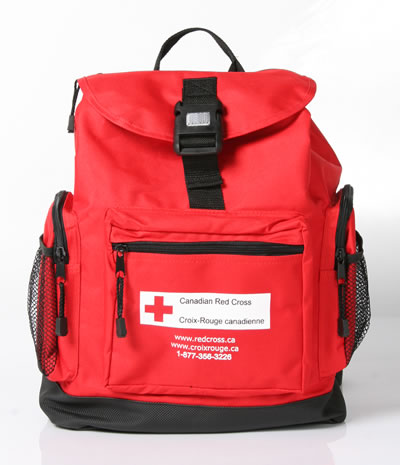
Growing Online Presence
After the move to Laval, FAC launched an online webshop on which it sold its first aid kits and related supplies. Ten years ago, having an online presence wasn't as common as it is today. Yet, it quickly became the company's main growth driver.
First Aid Central also tried selling its products in the U.S. market. It soon became clear however how complex it was to meet FDA requirements. In fact, the company spent so much time trying to manage the regulations of moving product across the border, that it was not fruitful and very difficult to operate the U.S. business. As a result, FAC ceased selling products to the U.S. in 2010 and has fully focused on the Canadian market since then.
Focus on Retail Clients Until
Despite having some larger clients, FAC mainly sold directly to consumers for their first aid needs at home, in their car or on vacation. The main reason being that it's very difficult to break into the industrial market.
That all changed when Acme United acquired FAC early 2020. Acme immediately started leveraging its multinational accounts that it had in the U.S. Moreover, Acme Canada had plenty of relationships with large industrial and retail groups for its cutting and office supplies. It already had a foot in the door with those organizations, and could expand its offering with Health Canada approved first aid products.
While customers have become bigger at FAC since the acquisition, the company was able to maintain its roots from back in the day when it started. It still buys all the components and assembles them in-house in Laval, which gives them the ability to deliver products very fast. In addition, the company still differentiates itself by customizing its kits to clients' specific wishes. First Aid Central today employs over 30 people and sells all across Canada and continues to offer exceptional products and service.
2020
- 1. Acme United Dividend Policy
Acme United Provides Smallcap Investors A Rare Opportunity For Dividend Returns
Acme United Corporation is a rare find on the stock market. It trades at less than $100 million market cap yet has been consistently paying out a dividend since 2004. As most microcaps are high-growth startups, they cannot pay out a dividend while incurring operating losses and burning cash. Even as they turn profitable, these companies often reinvest free cash flow back into the business in order to accelerate growth rather than pay back shareholders.
However, while ACU’s market cap is small, its business model of supplying cutting, measuring and safety products to consumer, health and industrial markets is mature and profitable. So in that aspect it resembles more like a DOW company than a typical microcap stock. ACU can afford a steady reinvestment of a portion of its free cash flow into product innovation or marketing initiatives, while still having plenty left over to pay a robust dividend.
The Company’s financials have been on an uptrend over the years. ACU has seen a modest 2.2% increase in revenue growth for the first nine months of 2019. But it has also seen an increase in excess of 10% for both its operating profit and net income for the same period. This greater profitability ensures that ACU’s dividend will remain stable or increase for 2020 and beyond.
Acme’s Total Return Over the Past Ten Years Has Been Enhanced By Its Consistent Dividend
ACU started the past decade with a $9.20 stock price and ended it at $23.79. This is a solid 159% capital gain over ten years. However, the Company also paid a $0.05 quarterly dividend back in 2010. That has steadily increased by a penny approximately every six quarters to a $0.12 per quarter dividend now. ACU has paid out a total of $3.54 worth of dividends to shareholders of record from January 2010 to today. This has resulted in a total return of 197%. Having a consistent dividend in addition to capital gains drastically improves the total return experienced by long term investors in ACU.
The good news with a microcap that pays a dividend is that shareholders aren’t purely relying on market sentiment to experience a return. No one can predict the demand for, and therefore the price of, ACU stock at a certain point in time. However, one can be reasonably assured, based on the history of dividend payouts and increase in earnings, that ACU will be paying a minimum $0.12 per quarter going forward with the strong likelihood of further steady increases.
This will not be dependent on hype or sentiment surrounding the stock. Because of the dividend, ACU shareholders have at least experienced a 1.7%-2.0% annual return over the last three years as a reward for holding a company that is able to achieve profitable growth.
Acme’s Dividend Will Likely Increase For The Foreseeable Future
We previously mentioned ACU’s year-over-year financial improvement for the first nine months of 2019. That has led to a $1.32 diluted EPS for year-to-date Q3 2019, up 18% from a $1.12 diluted EPS for year-to-date Q3 2018. ACU has so far made three dividend payments of $0.12 each for a total of $0.36, up 9% from $0.33 in the previous year.
The Company has a pattern of increasing its dividend per quarter by a penny about every 6 to 7 quarters. They look to ensure that earnings and cash flow are growing in excess of the dividend payments.
2019
- 1. Follow-Up Interview With Rick Constantine
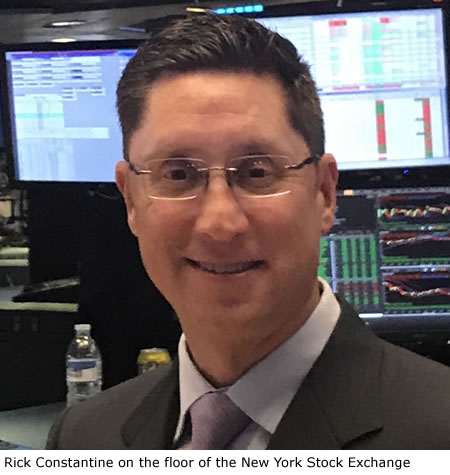
Q: It's been a few years since we conducted our initial interview with Rick Constantine. So it's high time to get an update on some of Acme United’s most popular brands. Rick, can you first describe your responsibilities at Acme United?
A: I am responsible for Camillus, Clauss, Cuda, DMT and Western brands. That includes managing the team of brand managers and looking after the new product development, sourcing, P&L, quality, sales, advertising and promotions.
Q: Let’s go over the brands that you manage for Acme United. First of all Camillus, which is one of the oldest and best known knife brands in the United States. Camillus continues to be a solid contributor to Acme’s financial results. What’s the secret behind its success?
A: Yes, Camillus has experienced incredible growth over the last 5 years. The growth is attributed to keeping our eye on our consumer, providing them with outstanding quality and innovation at the right price. We continuously launch products that are very innovative and pay strict attention to the products intended usage and ergonomics. We have a personal attachment to all of our products, and it shows. We only invent, produce and launch knives we would love to use in the field.
Q: At SHOT, the major marketing event for Camillus, many new tools were introduced. How are they performing?
A: The 2019 knives and tools are performing extremely well for sure. We launched nine (9) new products and they are all performing extremely well and have been received by our end users as well. We launched a new Carnivore called the Inject™. It features an all-new larger blade, hard case and a trimming knife that is stored inside the handle. We also launched the Pocket Block™ which is a small pocket-based multitool. Continuing on with our focus on Bush crafting, we launched our new Bushcraft folding knife featuring Sandvik steel and a micarta handle. We also collaborated with Darrell Ralph on a spectacular new folding frame-lock knife with VG10 steel and carbon fiber handle. You can see all of the new 2019 designs on our Camillusknives.com website.
Q: With the imposed tariffs on items being imported from China, it’s important to note that Camillus also sells high-end domestically manufactured knives. Can you give some more color on those knives?
A: Yes, the tariffs have impacted Camillus as well as the entire outdoor industry. We are working very hard to discover new factories outside China in order to avoid paying the imposed tariffs. Our search includes the United States of course. We are working with two factories to bring USA Made knives at affordable costs. The knives are still in development so make sure to follow our social media while at Shot Show to see what’s new.
Q: Camillus has recently launched a new Eagle Scout Knife collection. How do you feel about that?
A: Camillus worked very closely with the Boy Scouts of America to build a knife that is well suited for the Eagle Scout. The development took over a year and we launched the knives in 2019. The assortment includes two fixed blade knives and two folding knives as well. They feature high-polished 1070 carbon steel and micarta handles. There is also a custom wood presentation box available. All of the knives, display box and even the packaging was all made in the USA. Camillus has a long heritage with the BSA so it was nice to be their manufacturer of choice once again.
Q: The next brand, and the one which may be closest to your heart as I know you’re an actual US Coast Guard Captain, is the fishing tools brand, Cuda. It sure has been an exciting ride since the brand was launched only a few years ago?
A: It truly has been an incredible 4 years since our launch. To think back and see how the brand has gone since winning iCast is truly miraculous. We grew from 30 products to over 100 now. We are now into landing nets, gloves, harpoons, tool management and more. Cuda is one of those brands that you stand back and look at the amazing growth. We are all very pleased with Cuda’s growth pattern and there is no end in sight.
Q: At ICAST, Cuda’s most important marketing event of the year, you introduced plenty of new tools. Can you describe some of them for us?
A: iCast 2019 was our best show yet. We launched five (5) new products and the most exciting was Cuda’s new Sabiki dehooker. It is a device that, with a pull of a trigger, captures a bait hook, pushes the bait off and then moves down to the next hook. This is an incredible innovation as it is much safer than the existing solution and also allows for the health of the bait as the bait does not need to be touched in the dehooking process. We knew we had a hit when the social media feed hit over 50,000 views in two days. We also launched two new snips that are for smaller hands and also for the fresh water angler. Given all of the Cuda tools that have been launched over the years, we felt that it would be intelligent to launch a tool management system. We worked with the “SeaSucker” company in utilizing their suction cup technology. The result is a spectacular knife and tool holder that attaches to any flat surface using a suction cup so there is no need to drill into your boat. Understanding that more and more fisherman are fishing with chum, we created the Cuda Chum Bag. Our chum bag is tear resistant and also includes a fill and attachment system to make it easy to load the chum in the bag and to attach to a boat as well.
Q: One of the remarkable things about Cuda is the tremendous support it’s receiving from professional fishermen and fishing enthusiasts. The Cuda Pros are really the who’s who of the fishing world. What exactly do they do for the brand and how do you explain their continued support?
A: Our pros are the best of the best for sure. They are crucial in testing each and every tool Cuda launches. Most Cuda tools have a 3 year incubation/test period so I and our pros have the right amount of time to ensure the concept is right and that the tools are constructed properly. This includes the usage and ergonomics. Our pros make their livelihood on the water so understanding their point of view is very important to our future success.
Q: How do you see Cuda evolving the next few years?
A: Cuda will continue to build the very best in innovative tools. However, the brand will continue on its quest to get closer to the fish. Cleaning, filleting, descaling is a necessary part of fishing but it is not the best part of fishing. Catching the fish is the best part. Cuda will continue to focus on getting closer to the fish and integrating the brand into the anglers life from the time they hit the water to the time they come home.
Q: Another brand that performs really well is DMT, the world’s leading innovator of manual diamond sharpening technology. What was the condition of DMT when Acme acquired it in 2016?
A: DMT is a historic brand and known for the most amount of diamond, flattest surface and highest quality of diamonds used in a sharpening device. All of us at Acme are proud that each and every DMT Sharpener is made in Marlborough, MA as well. When we acquired DMT in February 2016, the process in which they made their sharpeners was the finest in the world. We had a hard look at making the plant efficient and that required a great deal of CAPEX investment to bring the factory and its machinery up to date. We wanted to add some automation and the update was completed in August of this year and it included adding 50% more plating capacity. DMT is now operating at its optimum efficiency.
Q: How has the sharpener brand evolved during the past three years and are new DMT products in the pipeline?
A: The sharpener itself is evolving to include more applications such as chain saw sharpening, hunting brad head sharpening, and more. We are looking for a solution for every edge that needs to be sharpened. There is a brand-new line of products coming from DMT that involves using our technology in a different usage from sharpening. I cannot divulge much about the new technology, but it is simply the best new product range in DMT’s 40 year history. The products will launch at Shot Show as well as on our Website and via social media. Stay tuned for more details.
Q: The final brand that we would like to cover is Clauss, which offers a diversified line of cutting tools for the lawn & garden, food service, and hardware industries. What are some of the latest trends in those industries?
A: Clauss is doing very well. The brand is extremely well known in the hardware and industrial segment and we have new technology that will target both segments. First, we are launching the first ever, “Carbide Titanium Shears” called the BlackLine and they will boast the hardest cutting edges on a shear in the market today. This will give the hardware or industrial user spectacular edge retention so they can finish the task at hand without excessive sharpening. We are also launching a brand-new technology in the Food processing/Service segment. Details on this new technology are still confidential but will launch in early 2020.
Q: How does Clauss try to stay one step ahead of the competition?
A: Clauss stays ahead of the competition because we are the cutting experts. Many companies build a variety of products where Clauss concentrates on making the best edges in the market. We also have been building cutting implements for the floral, hardware, industrial and food processing segments and their needs are demanding. Listening to these users ensures that we are building the right products and are task defined.
- 2. Western Knife Brand History
Western Knife Brand History
The Western brand's story, and that of several other knife manufacturers, could begin in 1864, the year in which Charles W. Platts emigrated from Sheffield, England. Platts descended from a long line of knife makers and, in turn, his descendants were to have asignificant impact upon a number of U.S. cutlery businesses.
Platts' first employment in the United States was with the American Knife Company in Reynolds Bridge, Connecticut. A few years later, he became superintendent at Northfield Knife Company, located in the nearby town from which the cutlery took its name.
Charles and his wife, Sarah, reared five sons all of whom learned the craft of knife making at Northfield Knife Company. Although other sons and their descendants remained active in the cutlery industry, the focus in this story is on the second son, Harvey Nixon (H.N.) Platts.
After graduating from Eastman Business College, H.N. Platts left Northfield in 1891 and moved west to Little Valley, in Cattaraugus County, New York. There, Cattaraugus Cutlery Company had just begun operations. The owners hired Platts to work in the blade grinding and finishing department of the new knife factory.
The Platts Family Reunited
Also working in the Cattaraugus office was Debbie Case, who lived with her brother, Russ, and their father, W.R. Case. A romance developed, and Debbie Case and H.N. Platts were married in 1892. Within a couple of years, they had become parents of two sons, Harlow and Reginald.
Due to a shortage of water power in Connecticut, Northfield Knife Company had to temporarily close its doors in 1893. When news of this closing reached Little Valley, Cattaraugus Cutlery quickly hired Charles Platts as factory superintendent. H.N. Platts welcomed his father, and brothers in Little Valley as they all began work with Cattaraugus. Practically every department of the Cattaraugus factory now had a Platts family member at work.
The coming together of Charles Platts and his five sons in one factory resulted in the inevitable: they decided to start their own cutlery business. Their plans were ambitious, as they immediately started manufacturing knives without going through the then typical first step of a jobbing operation.
In 1896, the six men formed C. Platts & Sons Cutlery Company in nearby Gowanda, New York, which in 1897 moved to new and larger facilities in Eldred, Pennsylvania. In 1900, when Charles Platts passed away, it was H.N. who assumed leadership of the family business. In addition to managerial responsibilities, H.N. served as the key salesman of Platts cutlery products. Ever expanding to new territories, his sales trips took him to Pennsylvania, New York, Ohio, Indiana, Nebraska, and Kansas.
His Very Own Firm
Like many knife grinders of that time, H.N. Platts' health began to decline due to "grinder's consumption", a disease of the lungs caused from years of work with the sandstone grinding wheels. Doctors recommended a move to the dry western states to improve his lung condition.
In 1911, H.N. Platts, his wife, and their two sons, who turned eighteen and seventeen that year, moved to Boulder, Colorado. Accompanying Platts and his family to their new home was a determination to continue his lifetime work in the cutlery industry.
The developing west proved to be fertile ground for knife sales since the cowboys, farmers, miners, and others workers needed quality cutlery to use many times every day. Platts knew the business and he certainly had experience in starting a cutlery factory, but he knew he would have to build up a jobbing business first before undertaking manufacturing.
The new business was named "Western States Cutlery and Manufacturing Company". The company though was often referred to as "Western States" or… "Western". The geographical name was given to establish an identity separate from the many knife businesses back east.
H.N.'s connections with the eastern cutlery manufacturers were important though as he sought sources of product. Although Western mainly sold pocket knives, it also offered kitchen knives, butcher knives, razors, scissors, and shears. Manufacturers of all these goods were cutleries like Challenge, New York Knife Company, Valley Forge, Utica, and W. R. Case & Sons.
The Manufacturing Dream
Only two years after the start of his own business, H.N. employed twelve salesmen and annual sales volume reached $50,000. Although the business was prospering and a manufacturing facility would have been in order, it would be several years coming, as World War I had begun and caused shortages of material and labor.
H.N.'s dream was realized however, in 1920 with the opening of his very own factory. The first knife manufactured was a two-blade jack-knife, followed by a Barlow knife. Initially, only the sheath knives were marked with "Western", while all pocket knives received a "Western States" stamp. This continued until the 1950s, after which only the "Western" name was used.
In the early 1940s, H.N. retired from active management of Western States Cutlery, leaving those responsibilities to his two sons, Reginald and Harlow. Pressed into military production soon after the Pearl Harbor attack, Western manufactured a broad range of knives for the military. Western's military knives were issued to field troops and sailors and were essential gear in airmen's survival kits.
At the end of World War II, the factory again commenced producing most of the pocket and sheath knives that it made before the war. In fact, demand for the cutlery's products frequently exceeded its manufacturing capacity. In addition, the Western knives were practically unknown in the East and Southeast of the U.S. due to the factory's limite production capacity.
In 1947, H.N. Platts passed away at age 81. Shortly thereafter, the youngest son Reginald left the cutlery business to pursue a local property management business. In 1951, Harlow Platts and his son, Harvey, reincorporated the company. Almost immediately, production at the cutlery plant was expanded to the maximum and all sales restrictions were lifted, opening up sales across the entire United States. In 1956, they changed the corporate name to "Western Cutlery Company".
By 1957 production had again expanded significantly. As a result, they decided to build a new cutlery 2.5 miles from the old site. Thanks to these improved facilities, the company was able to add many more products to its offering. Western, for example, developed new lines of stainless steel pocket and utility knives, synthetic substitutes for organic components like stag horn, and in 1970 introduced the Westmark custom Bowie sheath knife.
A New Era
Western Cutlery continued to thrive, and in 1978, the business relocated to nearby Longmont, Colorado. The cutlery now housed in a 67,000 square foot building on a 12-acre site to replace the cutlery's former 36,000 square building in Boulder.
Meanwhile, Harvey Platts had become company president and continued in that capacity until 1984, when Western was purchased by the Crossman Air Gun division of Coleman Corporation, thus ending the more than 100-year involvement of the Platts family in the U.S. cutlery industry.
The association with Coleman lasted until 1990, when an investor group in Wyoming purchased the Western knife factory and trademarks. Unable to obtain satisfactory profit performance due to stiff overseas competition, the company's brands, machinery, and tooling were sold to Camillus Cutlery Co. in 1991. In 2007 however, Camillus had to close its doors as a result of bankruptcy due to competition from companies making cheaper knives in other countries. Later that year, Acme United Corp. purchased the product brand names and intellectual property of the company.
Western as Acme United Brand
Less than two years later, Acme re-launched Western at the 2010 National Hardware Show in Las Vegas. The original line included both "Western States" as well as Western branded knives. Today, the brand is doing extremely well at many sporting goods dealers, distributors, wholesalers, e-tailers and retail partners globally.
Acme has continuously launched a mix of historic Western knife designs along with new designs that follow todays trends ensuring the brand remains exciting for its customers and consumers going forward.
In honor of H.N. Platts and the great men that made Western Cutlery what it is today. - 3. Westcott - The Worlds Favorite Scissors
The history of school and office products brand Westcott dates back to 1872, when Henry Westcott, together with his two sons Charles and Frank Westcott, started manufacturing wooden furniture used by printers and trellis units in Seneca Falls, New York.
After remaining in family hands for 96 years, Westcott was sold in 1968 to Acme Shear Company of Bridgeport, Connecticut, which was a manufacturer of shears and medical equipment. Soon thereafter, the first Westcott branded scissors were brought to the market.
Although that business was doing well, the products changed very little. In fact, there was only fractional innovation in the scissors industry worldwide. The majority of scissors had either plastic handles, which were aimed at the lower end of the market, or they were hot forged all steel, which were suited for the high end of the market. There was nothing in between.
THE WESTCOTT REVOLUTION
Late 20th century, Acme United took the decision to change all that and really apply some innovation to scissors.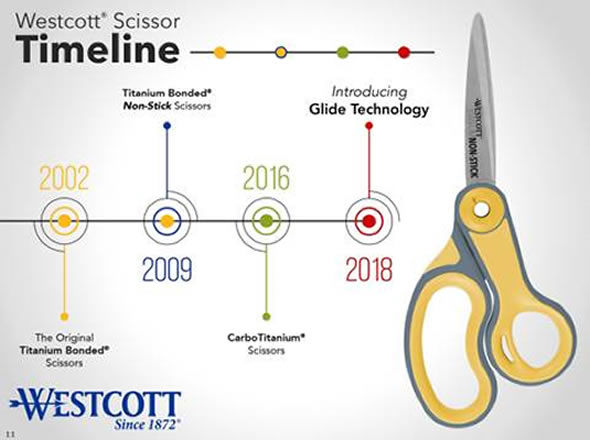
The Company launched the Titanium bonded scissor in 2002, an innovation that took the whole industry by storm. Mainly because not only scissors manufacturers took notice and tried to copy it, but also other tool manufacturers. Some companies for example, applied Titanium coatings to drill bits. The Titanium bonded scissor really set the pace for Westcott to become the predominant leader in scissors technology across the globe.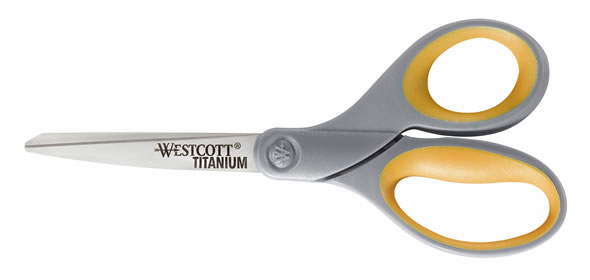
In 2009, another evolution was presented to the market, as a non-stick coating was added to the Titanium bonded blades. This made the Westcott scissors very useful in difficult environments like the floral area for cutting and trimming flowers and bushes, or in the arts and crafts area, where lots of glue and paste is used.
Again seven years later, the next generation of Titanium scissors saw daylight. The Westcott CarboTitanium scissors were equipped with blades that had a more durable coating, which was really meant to extend the life of the scissor. The basic goal was to keep the blades as sharp as possible, for as long as possible.
The most recent innovation in the Westcott scissors family is the "Glide" technology. The starting point was to make the mechanism of the pivot point of the scissor as smooth as possible. In order to do so, Westcott used a new cutting edge material, which is strong, durable, and creates very limited friction.
Next to providing almost frictionless movement, the pivot can also be tightened and loosened to whatever tension is required for the item that the user is cutting. The glide scissor will be launched mid-2019. Later, also a non-stick and CarboTitanium version will be brought to the market.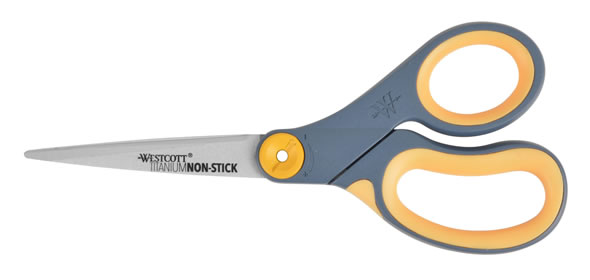
MARKET LEADER
Westcott is the market leader in scissors, and will continue to be in the foreseeable future, thanks to its constant pace of innovation. It comes up with revolutionary ideas to fulfil its customers' needs and wants, and works together with some of the best designers to finalize the designs and features.
The brand has distribution all over the globe, and in fact is now the largest scissor supplier in the world!
2018
- 1. Spill Magic - Conquering the Slip & Fall Market
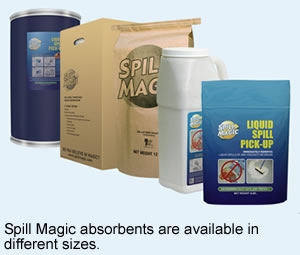
When Acme United announced the acquisition of Spill Magic absorbents in February 2017, it may have felt like an odd fit for the company's school, home, and office products lines. Learning however that the absorbents were used thousands of times per day in grocery stores to prevent slip and fall accidents, it soon became clear that the products could be perfectly integrated into Acme's safety business.
Spill Magic, Inc, the manufacturer of Spill Magic absorbents and related products, was founded by David Wampler, a serial entrepreneur. In fact, before going into the absorbent business in 1995, he had already owned bars, restaurants and even a construction company.
After seeing a demo of how these absorbents encapsulated all kinds of liquids into a dry powder that could be safely disposed, he was convinced this was going to conquer the dog and kitty litter market by storm.
However, consumers were used to buying a 50 pound bag of clay kitty litter at $5 a bag, while Wampler's absorbent cost $20 for a 10 pound bag. Even though the new absorbent was 50 times more effective than the clay litter, consumers figured that a bigger bag was a better deal.
Consequently, after a few months in business, Wampler changed strategies. He started marketing the absorbent as a safety product to prevent slip & fall accidents. He rebranded the product and removed the word "absorbent" from the packaging and the product's website.
The Slip & Fall Market
The average cost from a slip and fall is $22,800 per accident, while the average workers' compensation claim is $19,000. Slips are not only a problem for employees though. Customers, and even the general public, can also be at risk. If a building occupant or visitor has an accident, medical costs add up quickly.
Knowing that over 540,000 slip and fall injuries, requiring hospital care, occur in North America each year, it's clear that Spill Magic's products are highly needed. Preventing falls from spills saves companies tens of billions of dollars annually.
Spill Magic Birth
With his rebranded product, David Wampler started visiting super market chains. He figured they were the low hanging fruit of the slip & fall market, as jars filled with slippery food items are accidentally dropped on the floor on a daily basis, leaving shoppers at risk. Soon thereafter, he received the first orders from Safeway, Kroger and Walmart.
In 1996, Spill Magic, in tandem with the safety manager at Walmart, developed the Spill Response Program. Under the program, the company would basically sell everything that a potential customer needs to clean up a liquid spill, such as brushes, brooms, dustpans, caution cones, etc.
Spill Magic grew rapidly by introducing its products to numerous retail stores and attending trade shows aimed at retail chains. While revenues in 1995 were only minimal, the next year they already grew to $695,000 and by 1997 they surpassed the $1 million mark. In 1998, sales again doubled to $2.3 million.
Revenues continued to rise in subsequent years, as new clients were added and existing retail chains expanded their use in more of their stores.
While the company's main office was located in Santa Ana, CA, it opened an additional manufacturing and distribution centre in Smyrna, TN in 2013. The main reason to open a second facility was that the absorbents are bulky and light, making them expensive to ship. Consequently, opening the Tennessee facility made shipping much less expensive for the company's East Coast customers. This event again gave a boost to sales. Eventually, the company reached revenues of $6.3 million in 2016.
Spill Magic as Acme United Brand
Soon after Acme United Corporation acquired Spill Magic early in 2017 for $7.2 million in cash, the business was successfully integrated. Marketing support staff was added, which placed the products at major new mass market account, industrial and safety products distributors, online customers, and into the office products market.
Today, Spill Magic continues to focus on B2B customers, such as retail, grocery, restaurant, hotel chains and governmental agencies with the goal of reducing slip and fall accidents in their locations. Its main customers are chains such as WalMart, Publix, Kroger, SuperValu, and Albertsons.
Next to its regular absorbent, Spill Magic offers the Biohazard Cleanup Kit, which is an OSHA compliant solution to safely remove blood and bodily fluid spills.
In addition, the company markets the Hazmat Cleanup Kit, which is a completely customizable kit to safely remove hazardous liquid spills, and also the Acid Absorbent Neutralizer, which is a lightweight high performance absorbent that provides quicker and safer response to acid spills.
As for the near future, Acme aims to broaden its distribution to sectors where the products aren't available yet. For example, the spill pickup products are ideally suited to be used in auto repair shops, where oil, gasoline, transmission fluid, brake fluid, coolants, and solvents present a challenge when spilled.
Finally in Europe, the Spill Magic absorbents have been rebranded to Easy Absorb and will be launched shortly. - 2. SmartCompliance - First Aid Innovation at its Best
For a couple of decades now Acme United is on the forefront of innovation for tools in the school, home, office, industrial and hardware sectors. In more recent years, it also worked its magic for fishing, gardening, and outdoor enthusiasts.
Before 2014, however, the Company struggled with innovation in first aid, one of its major activities. In fact, not only Acme United seemed to be at a standstill, the entire sector still relied on products that had already been around for many years.
There was one exception to this rule, First Aid Only Inc. (FAO), based in Vancouver, WA had since its founding in 1988, pioneered consultative selling and support of first aid items to large corporate customers, and had since become a recognized industry leader. FAO offered unusual forms and different ways of packaging first aid materials. However, the really big innovation at FAO was its SmartCompliance first aid kits and refills, which made it easy for users to meet regulatory requirements. Acme United felt there was a significant growth opportunity at FAO and acquired the business in June 2014.
INTEGRATING AND EXPANDING THE SMARTCOMPLIANCE LINE
SmartCompliance was the true crown jewel of the First Aid Only acquisition as the cabinets were specifically designed to meet workplace first aid needs. The following components work together to create a very comprehensive solution for first aid supplies in a business environment. Firstly, clearly labeled compartments create a cabinet that is easy to use and restock, eliminating disorganized and missing supplies. The refills come in small boxes. So whenever a box is empty, it can easily be taken out and replaced by a new one.
Secondly, the cabinets are equipped with dispensers that make it hard to grab more than one or two items at a time, reducing pilferage.
Finally, the SmartTab ezRefill system for reordering and restocking revolutionizes replenishment. As supplies are used, the patented SmartTab ezRefill reminder tabs, that are inserted about two thirds of the way into each box,notify users that it's time to reorder supplies. In addition, the SmartTab cards have all the necessary reorder information, making it easy for companies to remain ANSI compliant, while not overstocked.
At the time of the acquisition, First Aid Only had one SmartCompliance model. Shortly after Acme United gained control, it expanded the product line, both in number of models as in the number of components to put in the cabinets. Today, there are about thirty different configurations. Depending on the number of people in an organization and the type of business it is in, FAO has the suited SmartCompliance cabinet.
SmartCompliance's main competitors are the so-called van delivery companies. Their model is very different though. A driver will periodically go to every site to check the cabinets and refill the products that are missing.
This model offers very high service, but also carries a hefty price tag to remain compliant. In today's world, where companies are very competitive and concerned about costs, the van delivery system may have seen its heyday. FAO's SmartCompliance design also meets every workplace's first aid needs, while providing the customer complete control of what to order at a much lower cost.
BETTER AND FASTER WITH THE SMARTCOMPLIANCE APP
The next major step forward for SmartCompliance was the development of the SafetyHub app. Available for both Apple and Android, the application allows requisitions for SmartCompliance cabinets to be saved, placed, and trackedfrom a mobile device or tablet.
New first aid cabinets can be registered through the app, and can be assigned to, and managed by, multiple users. So for example, a user can open the cabinet and check for products that have run out or a SmartTab card sticking out. The user can then scan the items that need replenishing with his mobile device on which the app is installed and send the order to the purchasing director for approval, or directly to the first aid distributor of choice. The app also helps companies to remain OSHA compliant as it clearly shows how often a cabinet is inspected and by whom.
In a recent update, FAO significantly broadened the capabilities of the app. It is now able to track anything in a facility that needs to be either serviced, replenished, or calibrated at certain intervals. For example, the expiration dates of all fire extinguishers in a facility can be uploaded into the app. Subsequently, 30 or 60 days before the due date, the user would get a push notification on the app alerting him to order new extinguishers. This also works for Automated External Defibrillators (AED's) or respirators, in which batteries need to be replaced every so many years.
A new update to the app, scheduled to go live in the fourth quarter of this year, will provide predictive analytics and benchmark consumption of products for its users.
A $1 BILLION MARKET
SmartCompliance revenue is rising fast. Both last year, and so far in 2018, sales showed strong double digits growth. This trend is expected to continue, as the only meaningful competition is the van delivery model, which is more costly and far less versatile than the technology driven SafetyHub app.
Newcomers to the market will face a relatively high barrier to entry and will have to take Acme United's existing and pending patents into account.
As more and more companies understand that they need to become, and stay, OSHA compliant, and can do so at a fraction of the cost of the "old" van delivery model, the choice is obvious. Consequently, First Aid Only and its SmartCompliance cabinets have plenty of room to grow in an estimated a $1 billion US market. - 3. Camillus Follows Up with Century old Tradition as it Launches Family of Eagle Scouts Knives
The Boy Scouts of America (BSA) and Camillus have a powerful history dating back more than 100 years, including the fact that Camillus was one of the first manufacturers of Boy Scouts knives.
The recent launch of the Camillus Eagle Scout Knife collection - the first one since Acme United took over Camillus in 2007 - is very exciting! Not only are these knives display-worthy, they are also made to be used daily in order to "be prepared".
Humble Beginnings
Boy Scouts knives have been around almost as long as the Boy Scouts of America itself. The BSA was founded in 1910, and one year later, the first official BSA knife already appeared on the landscape.
That honor was given to the New York Knife Company from Walden, NY, which had a monopoly to produce the official Boy Scouts knives until 1922. Many of these knives were actually used as giveaways, as in the early years the BSA stimulated sales of its Boys' Life magazine by offering knives as rewards to scouts for getting new subscribers.
Despite there being an official Boy Scouts knife manufacturer, plenty of other knife companies produced knives that were made with the Scout in mind, but were not official BSA knives. These would have names like "Boy Scout", or "Trooper", or "Scout". Amongst those companies was Camillus Knife Co that as early as 1913 had its own 'Standard Scout' knife.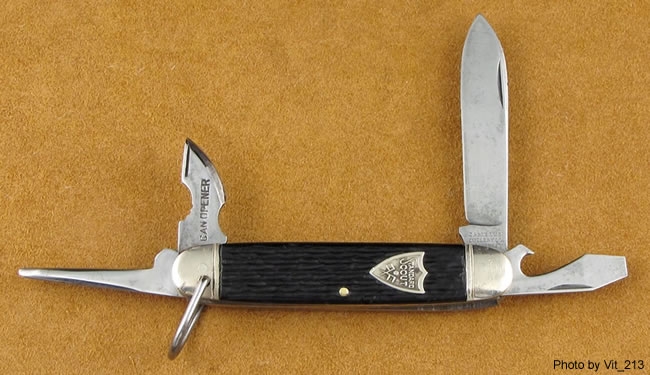
Since that humble beginning, dozens of manufacturers brought hundreds of different varieties of official BSA knives to market. Some were designed specifically for the BSA, while others were versions of regular production knives with the BSA shield added to the handle, or the BSA etching added to the main blade.
Camillus' First Official Knife
It took Camillus until 1946 to receive its first order from the Boy Scouts of America to manufacture a full line of official folding knives.
This is a camp style knife. It is one of the standard BSA models and produced by several different companies. On the bail end, it has two blades. The first one is a combination flat bade screwdriver and bottle opener, while the other is an awl (leather punch). The other end of the knife has the main blade, and a two-piece can opener. The shield is made of raised silver metal, and has the First Class badge on it. The handles are black. Each bolster has a single line stamped into it. This version was manufactured from 1946-1949.
The Camillus Cutlery Company continued to manufacture official Boy Scouts knives for exactly 60 years, until it had to close its doors in 2007. During those six decades, the company produced hundreds of different BSA knives and varieties.
One of those knives that stood out was the Commemorative Norman Rockwell Limited Edition multi-blade folder, which featured a Norman Rockwell scene on one side of the handle, and the Boy Scout Oath on the other. Every year, the BSA selected a Norman Rockwell print to be featured on this particular type of knife.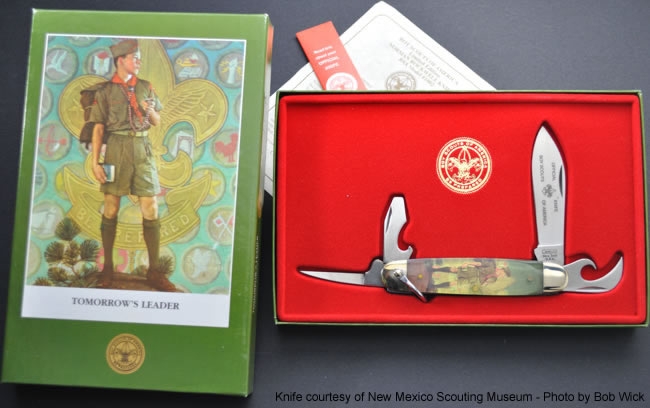
New Family of Eagle Scout Knives
After noticing a gap in the knife category geared toward Eagle Scouts, Boy Scouts of America's Mike Gerard - an Eagle Scout and former Army Ranger - decided to take action. He sat down with the Camillus team and talked about what earning an Eagle Scout rank taught him about life and how that contributed to his elite military experience.
Eagle Scout is the highest achievement or rank attainable in the Boy Scouting program of the Boy Scouts of America (BSA). The designation "Eagle Scout" was founded over one hundred years ago. Only four percent of Boy Scouts are granted this rank after a lengthy review process.
The teams from both Camillus and Boy Scouts of America made sure that every single part and piece chosen had a solid reason behind it, and that everything could be traced back to the guiding values of Oath, Law, and Motto.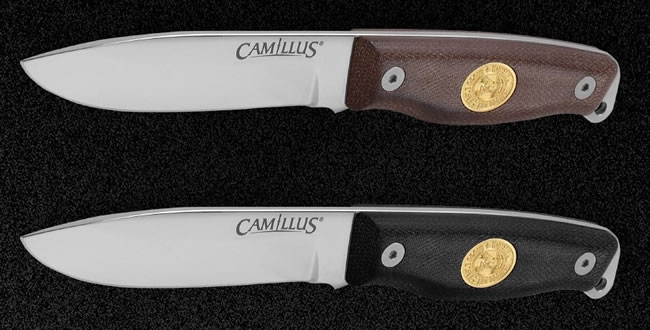
The two fixed blade knives are 8.5" and come with a brown micarta or black G10 handle. The 4" blade is made from 1095 mirror polished high carbon steel and is full tang.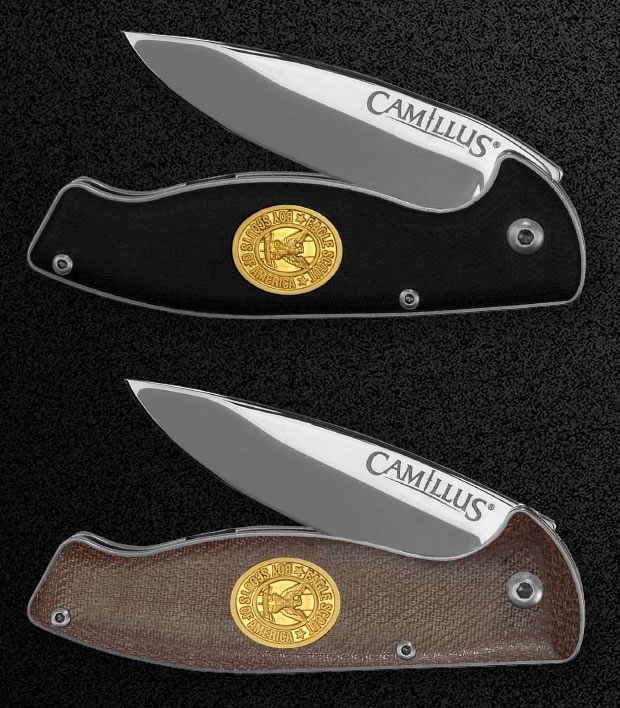
The same high quality steel was used for the 6.75" folding knives. They have a finger flipper opener and a pocket clip. All knives carry a Brass Eagle Scout Emblem inlay in the handle.
Camillus has once again outdone itself as the Scout motto truly applies to this knife set. They are made to be easy to clean and sharpen, so they are ready for every adventure and can be used for anything.
2017
- 1. Westcott Launches Revolutionary Glue Guns for Craft and DIY Markets
Crafting has become a popular activity for millions of adults. The Do-It-Yourself (DIY) movement took off during the recession, and as the economy recovered, people just continued with their crafting habits. It's a steadily growing market.
The Westcott team at Acme United noticed this trend and realized that although it sold products such as scissors and paper trimmers, it didn't have tools specifically aimed at crafters, making it an untapped market.
Early 2016 the team identified glue guns as a sizeable market in the craft and home DIY space, with little product innovation. They concluded that there was a significant opportunity for Westcott to capture a decent share of the market.
So the Westcott people started thinking about which features and benefits the glue guns should have, the color combinations, the sizes, and price points. In other words, they wanted to figure out how to add maximum value to glue guns without adding a whole lot of cost. After all, crafters want an affordable, but quality product.
Product Development Phase
Most new products at Acme United will pass through a series of stages from ideation through design, manufacturing and market introduction. It was no different for the Westcott glue guns.
The first ideas and features were put on paper and sent to the Company's engineering team, which came back with some initial sketches. From there a digital computer model of the product was created, which was altered quite a lot as new features were added and sizes were changed.
Next a prototype was printed with a 3D printer to actually test if the product felt right and if all proportions were correct.
The following stage was engineering and full product development. Here all bits and pieces of the tool were tested to the limit. This is also where third party crafters gave their valuable feedback for some last-minute alterations.
The team decided to initially launch four different products: the revolutionary glue pen, glue guns with high and low temperatures, and glue sticks.
The end products were phenomenal and miles ahead of the competition. They featured non-stick tips, color changing nozzles that tell the user the glue gun is hot, ergonomically designed handles, and in case of the glue gun, an integrated glue stick holder.
To give an idea of how innovative these products are, Acme United filed no less than 15 utility patents for these glue guns, while during the past 20 years all other glue gun manufacturers together filed 4 patents!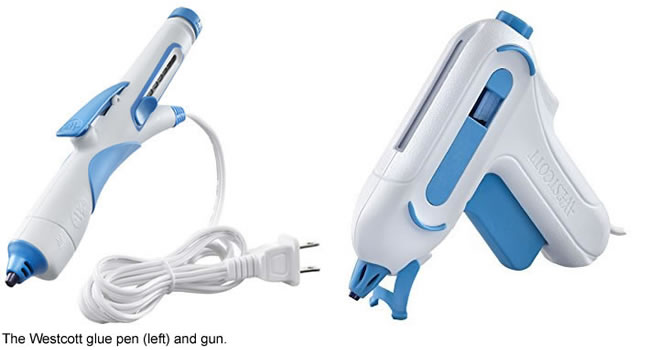
Ready for Launch
To launch its new family of glue guns, Westcott is running a campaign targeted at crafting enthusiasts, teachers, and moms. For example, celebrated fashion designer and leading cast member of the Real Housewives of New York City show Heather Thomson, featured the Westcott products on regional TV channels. She did a special on Mother's Day gifts and the Westcott glue guns were one of the items that she suggested.
The entire glue gun family was first placed at Michaels, with distribution shortly following at chains like Rite Aid and Walmart. Next to physical stores, the products are already available at several online stores such as Amazon.com, and Walmart.com.
The tools will most likely become available in Europe and Canada as well.
More Glue Guns in the Pipeline
The arts and crafts markets have been growing in popularity the past few years, so it's only logical that Westcott wants to take optimal advantage of this opportunity.
At this moment, there's a Westcott glue pen and two versions of the glue gun available. In a few weeks a 60 W glue gun version will be launched. This will be a mid-range, more basic product. We understand that several more guns are in the pipeline, which will be launched late 2017, or early 2018. The Westcott glue guns are expected to soon become a multi-million dollar business for Acme United. - 2. Ergo Jr. Scissor Reduces Stress with 50% on Kid's Arm and Wrist When Cutting
In partnership with the United States Ergonomics organization, which specializes in product and workplace ergonomics, Acme United developed the Ergo Jr. The world's first scissor specifically designed with ergonomics, durability and comfort for children in mind. No other company before has spent this amount of time and resources to truly develop a world class cutting product for children.

We were fortunate to speak with Chris Alagno, the Vice President of the Westcott brand at Acme United, to get a feel of how the Ergo Jr. came to live. Chris' background in the tool industry, where he developed easier to use, and more ergonomic, equipment, have helped him to come up with better and smarter tools for school, home, and office use at Westcott.
Part of his job at Acme is to search for problems. Because after all, where there's a problem, there's also an opportunity to develop a product that addresses that issue.
One such issue was observed when kids used scissors. Young children use them very differently than adults, as they pick up the paper that they want to cut. Consequently, they have to arch their hand and arm downwards to cut, which puts a tremendous amount of stress on their hands, elbows and forearm muscles.
The basic problem was that kids had been using scissors for adults that simply had been shrunk down in size.
The solution was to develop scissors of which the blade was angled down so that the stress was removed from their hand and arm when cutting. This helps students, teachers and parents as learning how to cut correctly is part of kids' kindergarten curriculum.
After the initial idea, the next step was to find out what's currently available in the market and what's the opportunity from a sales perspective? It turned out that no ergonomically correct tool for children had ever been designed and brought to the market. Consequently, there's outstanding market potential as each year millions of kindergarten students learn how to cut.
From that moment the search was on to find the ideal angle of the scissor so that kids cut very accurately, while giving them the least amount of stress on their hand. Because Acme didn't have the equipment in-house to conduct all the necessary tests, it partnered with United States Ergonomics, a leading ergonomics organization.
Partnership with US Ergonomics
United States Ergonomics specializes in product and workplace ergonomics. It maintains a state?of?the?art ergonomics laboratory where product testing is performed. Moreover, it is the only company in the United States offering Ergonomic Product Certification.
The project was directed by a Certified Professional Ergonomist (CPE) with over 25 years of product testing experience, who was assisted by experts in biomechanics and physiology.
They really took it to a level where nobody has ever taken anything like this before. No less than 50 kids from ages 4 to 6 participated in the research. They were each hooked up to an Electromyography, a device that measures stress on muscles and predicts fatigue potential.
During many months of testing, the specific muscles, which children use while cutting, were researched. Based on this data, prototypes of the Ergo Jr. were constructed, which had blades with different angles.
The children were called in again to test the different prototypes, and the outcome was astonishing. The new results showed that kids were putting 50% less stress on their muscles while cutting with the Ergo Jr. As they put less stress on their muscles, they were able to cut more accurately and longer without getting tired.
Final Design and Packaging
Once US Ergonomics came back with its final recommendations to improve the scissors further, it was time to engage with an industrial design firm.
Acme reached out to Product Ventures, a firm that already worked closely with US Ergonomics, to design and develop the Ergo Jr. scissors and packaging.
United States Ergonomics basically provided them with a bunch of measurements that detailed the ideal kids' scissors based on all the tests that were conducted. From there the industrial design group optimized an ergonomic fit for comfort, control and accuracy.
Once that part of the process was completed, it was time to call in the manufacturing team.
Conclusion
All in all, this was an extraordinary project for the Westcott team. It took about a year to develop the Ergo Jr., but it was well worth it.
The Ergo Jr. makes life easier for students, teachers and parents, as it enables kids to cut 40% more efficient with 50% less stress on their arms and wrists compared with regular scissors.
In 2016, the Ergo Jr. was exclusively launched at a major retailer, where it sold very well. This year it will be opened up to the entire worldwide market. - 3. CUDA - ACME UNITED'S WORLDWIDE FISHING TOOLS BRAND
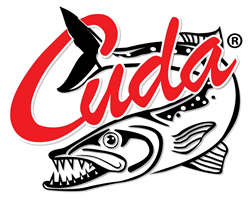 In July 2014, Acme United launched an entire line of fishing knives and tools under the brand name Cuda. About 30 tools, specifically designed for inshore, offshore and freshwater fishing, were shown to the public for the first time in Orlando, Florida at the International Convention of Allied Sportfishing Trades (ICAST), the largest sportfishing trade show in the world.
In July 2014, Acme United launched an entire line of fishing knives and tools under the brand name Cuda. About 30 tools, specifically designed for inshore, offshore and freshwater fishing, were shown to the public for the first time in Orlando, Florida at the International Convention of Allied Sportfishing Trades (ICAST), the largest sportfishing trade show in the world.
Right from the start, Cuda aimed to distinguish its tools from the competition by giving them a breakthrough design. For example, the handles were constructed with a transparent poly carbonate, allowing anglers to see that they had a full tang construction.
The tools were also manufactured with German 4116 steel for corrosion resistance and a superior edge retention. In addition, Cuda added a global patented process called Titanium Bonding. This technology treats the steel so that it becomes three times harder than regular steel. Cuda also added materials such as Aluminum & Titanium Alloy and Tungsten Carbide for better performance.
Thanks to these features, the brand was well received by the fishing community and the media. In fact, at ICAST, in 2014, more than 700 tackle products and accessories were entered by 253 companies to win one of the 24 "Best of Show" awards. Cuda also entered the competition in the FishSmart Tackle category with the Grip & Scale tool, and came out on top. A true achievement and a testament of the quality of the new tools!
The tools soon became available at big box and sporting goods stores, such as West Marine, Bass Pro, Cabelas, Dick's and Academy. Consequently, the brand immediately contributed to Acme United's sales.
BIGGER AND BETTER AT ICAST
The International Convention of Allied Sportfishing Trades, better known as ICAST, is the world's largest sport fishing industry trade show. This year, the show celebrated its 60th edition. It hosted 582 exhibitors in 1982 booths covering almost 200,000 square feet of the Orange County Convention Center. The show attracted close to 15,000 attendees, including 1,156 people from 73 countries.
ICAST is the ultimate showcase for the latest innovations in gear, accessories and apparel that help make a day on the water both exciting and rewarding. Keeping up with that tradition, Cuda, since its launch, has introduced numerous new tools at the show.
In 2014, thirty fishing tools, including snips, wire cutters, scale/skin grippers, knives and scissors, were launched. The following year, more than 20 tools were added to the assortment, including a 6" breaking knife, several fillet knives, a knife & sharpener kit, and a marlin spike knife.
Early 2016, no less than six of these tools: the Marine Shear, Flex Fillet Knife, Grip & Weigh, Snip, Small Dehooker, and Dual Plier won a GOOD Design award. GOOD Design is an award from the Chicago Athenaeum, Museum of Architecture and Design, and is one of the oldest and most important design competitions worldwide.
Distribution of Cuda products also expanded abroad, as they became available at the largest fishing chains in Germany, Spain, France, Russia, the UK, the Netherlands and the Scandinavian countries.
At ICAST 2016, Cuda introduced its first ever professional line of knives. The seven different knives featured USA CTS 40A stainless steel blades with titanium-ceramic non-stick Bondings and 47-layer compressed, cold-molded, micarta handles. Also carbon fiber floating gaffs and several freshwater tools such as needle nose pliers, clippers, forceps and a jaw spreaders were launched.
In addition, new items to the accessory line were added, such as a heavy-duty Cuda Sheath & Lanyard, which fits a variety of Cuda pliers and snips; a Cuda Ice Pick; and a Cuda Connect, which connects an action camera, such as a GoPro or WASP to a Cuda Tag Stick or Harpoon.
Moreover, Cuda showed a new series of first aid kits designed specifically for the needs of anglers.
This year, the brand again expanded its product offering with a new line of fishing nets, which integrate a zipper for easy net attachment and removal.
Cuda also launched a line of fishing gloves that meet the needs of both salt and freshwater anglers. Available in three styles - bait, wire wrap and offshore - the gloves are constructed from puncture & cut resistant, quadruple-layer Kevlar. The gloves incorporate touchscreen capabilities so that an angler can operate a smartphone or other electronic devices while wearing the gloves.
Finally, Cuda introduced a premium line of knife and hook sharpeners designed specifically for fresh and saltwater anglers. To meet a wide range of fishing needs, Cuda created three sharpeners - developed in cooperation with Diamond Machining Technology - with grits ranging from fine to extra fine. The entire collection - which includes a bench stone, knife and hook sharpener and cutting board sharpener - features rust-proof construction and is made in the USA. Especially the Cutting Board Channel Sharpener, which fits right on the back edge of a marine cutting board, proved to be extremely popular and convenient.
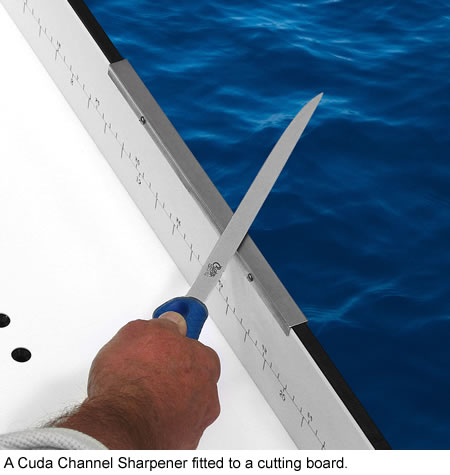
HAND-PICKED CUDA PROS
A factor that has helped gain the brand a solid name in the fishing community is the Cuda Pro Staff. Right from the start, Cuda attracted several well-known fishermen to help design and test the tools, and to represent the brand.
Bob Izumi, known from the syndicated television show Real Fishing, and three captains seen on National Geographic Channel's hit series Wicked Tuna: TJ Ott, Dave Marciano, and Dave Carraro tested the initial tools for nearly two years before they were released to the public.
Since then, the Cuda Pro Staff has grown to more than 40 ambassadors today. They continue to suggest improvements to prototype tools, so that when they go into production, the products are the best on the market.
Another Pro is Jimmy Johnson, one of the most recognized sportsmen in the US. He is the first person in football history to win a national collegiate title as a player, serve as head coach to a NCAA championship team, and lead an NFL team to two Super Bowl victories.
Next to helping design and develop new Cuda fishing tools, these Pros are true evangelists for the brand. They use the tools at fishing tournaments or on their TV shows and they help spread the word on Cuda on their Facebook, Instagram, Twitter and YouTube channels. All in all, they are very helpful to build brand recognition.
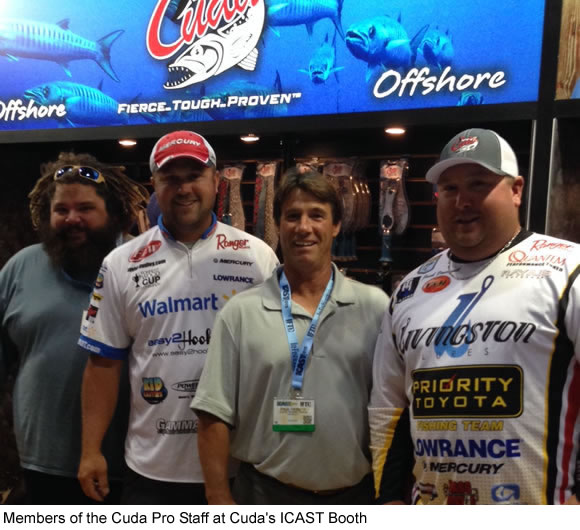
60 MILLION ANGLERS BY THE END OF 2021
60 million anglers in the United States by the end of 2021 that is the goal of the Recreational Boating & Fishing Foundation, which is implementing programs and expanding staff to attract new people into the sport.
Also Cuda is contributing to this goal, as it donates a portion of its net sales to benefit families who might not otherwise be able to "get together and fish". The brand's goal is to bring families closer through fishing and to help educate those who might be new to fishing with helpful tips and techniques from the Cuda Pros.
With 47.2 million licensed anglers today, more Americans fish than play golf (21 million) and tennis (13 million) combined. Anglers generate over $46 billion in retail sales annually with a $115 billion impact on the nation's economy creating employment for more than 828,000 people. An impressive market!
Note that all these figures relate to the United States alone. Cuda, however, is expanding globally, so there is a large addressable market.
CUDA TODAY
Today, Cuda has over 100 different products in its range. Consequently, it's safe to say that Cuda has a tool that will satisfy every freshwater, saltwater, inshore, offshore or river bank angler. - 4. Acme United Celebrating 150 Years Since Inception
This year marks the 150th anniversary of the founding of Acme United Corp. In one and a half century, the Company has become the biggest scissor manufacturer in the world, and a major supplier of cutting devices, hunting and fishing tools, and first-aid products for school, home, office, industrial and hardware use.
The roots of the Company can be traced back to 1867 when German immigrant Leo Renz bought an old grist mill in Naugatuck, Connecticut where he opened Renz Shear Shop, specializing in cast iron shears and scissors.
In 1873, Leo Renz, along with his brother Robert Renz, another family member Mitchell Renz, and John Peck, officially incorporated their business as The Renz Shear Company.
The business continued to grow until in 1878 when Leo Renz passed away. The Company was subsequently sold to Mitchell Renz, who moved the operations to Fairfield, Connecticut in 1880. Two years later, the Company was incorporated as The Acme Shear Company.
Mitchell Renz was also responsible for bringing the brothers David C. Wheeler and Dwight Wheeler into the business. In fact, they bought out Renz, who decided in 1883 to quit the shear making business to try his luck in Florida in real estate.
Under Wheeler management, Acme Shear expanded its product lines. By 1885, it needed more manufacturing capacity and bought 5 acres on Hicks and Knowlton Streets in Bridgeport, CT. The following year, the first scissors were manufactured at the brand new plant. The Company would continue to produce scissors and shears at that same location for 111 years.
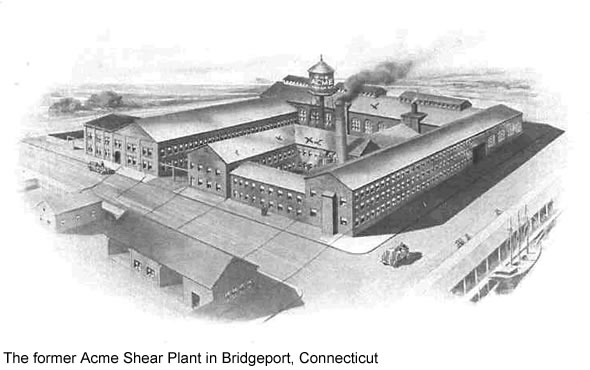
Joining The War Effort
Acme Shear grew rapidly, especially when national accounts, such as F.W. Woolworth, began carrying its scissors and shears product lines.
By the end of World War I, production hit historical highs with large shipments to the U.S. Navy, Army, Red Cross, and Emergency Fleet. The Company's exports boomed. By 1920, Acme Shear was manufacturing 35,000 scissors and shears per day, six days a week. Annual volume exceeded 10 million pairs.
In 1923, the plant in Bridgeport, CT again had to be expanded to meet rising demand. In 1936, Acme Shear became the largest scissor and shear manufacturer in the world, a position that Acme United still holds today. In that time, annual production exceeded 15 million pairs.
In 1942, the United States was at war with Germany and Acme once again converted to war work. Dozens of employees enlisted, and a nursery was established to attract mothers into employment.
The following year, production reached an all-time high with over 20 million industrial shears, 22 million surgical shears, and nearly 4 million blunt children's scissors. Production totaled 46 million units during this peak war year.
Medical Field Entered In 1960s
After World War II, production capacity was added to meet growing demand as the United States and Europe rebuilt.
In 1960, Acme Shear acquired Surmanco Ltd, a scissors manufacturer in Sheffield, UK with the goal to sell directly to the European market.
Three years later, Acme purchased the Seneca Novelty Company, a manufacturer of wooden rulers and yardsticks based in Seneca Falls, NY. This marked the beginning of Acme's highly successful sales in the school and office products trade.
In the mid-1960s, Acme Shear began selling disposable medical scissors to hospitals and medical distributors. It later introduced a line of disposable hemostats, scalpels, forceps, and other surgical instruments, and became so successful that a new manufacturing plant in Fremont, North Carolina was opened to meet demand.
Acme Shear marked its 100th anniversary in 1967 and went public on the American Stock Exchange. At that moment, Acme accounted for approximately 75% of the cold forged scissors and 91% of the cast shears produced in the United States. Sumanco produced over half the total cast and forged scissors and shears in the United Kingdom. Combined employment was approximately 800 people, and output reached 50 million units annually.
Acme Shear continued its efforts of diversification. In 1970, it acquired Westcott Rule Company, a major ruler manufacturer, which was founded in 1872 in Seneca Falls, NY. To better reflect the expanded product line, the Company changed its name to Acme United Corporation.
Struggles And Revival
Much of Acme United's growth during the 1970s was due to its thriving medical business. In 1980, Acme United was named Vendor of the Year by American Hospital Supply for its excellence in disposable medical instruments. Sales to that company reached $22 million sales in 1983, representing about half of Acme's revenues.
However, in the late 1980's, American Hospital began manufacturing many of the tools that it previously bought from Acme United itself. In addition, numerous hospitals joined buying groups and began to pool their orders to obtain steep discounts, which resulted in lower margins. Moreover, the Company faced strong new competition from a United Kingdom medical supplier, Smith & Nephew. Consequently, Acme United spent much of the late 1980s struggling.
During the early 1990's Acme United continued to suffer losses, which was reflected in the Company's share price. The stock, which had been trading around $25 in the 1980s, now sold for only $3, leading to strong shareholder pressure to implement significant management changes.
That change arrived in November 1995, when Walter C. Johnsen was named CEO of the Company. He replaced Dwight C. Wheeler who resigned. Johnsen had joined the board of directors earlier in the year to work on strategic focus and the medical business. He had previously been vice chairman and a principal of Marshall Products, Inc., an Illinois supplier of blood pressure units, stethoscopes, and other medical devices. Under his leadership, Marshall became the largest blood pressure unit supplier in the U.S. It was later acquired by Omron Corporation of Osaka, Japan.
After losing more than $8.7 million on sales of $52.2 million in 1995, Acme United initiated a cost reduction program. The Company closed seven manufacturing plants, with production moving to Acme United's more modern, lower cost, facilities in North Carolina and oversees to Korea and China.
Brian S. Olschan joined in 1996 as senior vice president of sales and marketing from General Cable Corporation, where he was a fast-rising executive. He was soon promoted to Chief Operating Officer, and helped transform the Company from an old line manufacturer to one driven by innovation, and customer focus.
During the late 1990s, Acme expanded its North American school, home and office products businesses. As part of its strategic refocus, it sold its medical division for $8.2 million to Medical Action Industries, a Long Island-based supplier of medical and disposable surgical products.
Although the loss of the medical division significantly lowered the Company's total revenues, Acme United returned to profitability, posting net income of $1.1 million in 2000 after losing $156,000 from continuing operations in 1999 and $1.7 million in 1998.
In 2002, the Company introduced the world's first titanium nitride scissors which stayed sharper 3 times longer than competitive products. These went chain-wide at Staples, and soon gained large presence at Office Max, United Stationers, SP Richards, and Walmart.
On An Acquisition Path
In 2004, Acme United reported a 24 percent increase in sales to $43.4 million, while net income grew to $3.2 million. With sales showing improvement in all markets, Acme United had completed its turnaround under Walter C. Johnsen's leadership.
With business once again on an upswing, Acme United was in a position to grow externally. In June 2004, it acquired Clauss Cutlery, a Fremont, Ohio manufacturer of scissors and cutting tools for the floral and industrial markets.
The following years, the Company went on a true acquisition path.
- - In 2007, it bought the brand names and intellectual property of Camillus Cutlery Company, one of the oldest knife manufacturers in the United States;
- - In 2011, Acme United acquired Pac-Kit Safety Equipment Company, a manufacturer of first aid kits for the industrial, safety, transportation and marine markets;
- - The following year, it acquired certain assets of The C-Thru Ruler Company, a well-known supplier of drafting, measuring, lettering and stencil products;
- - In 2014, it acquired First Aid Only Inc., a supplier of first aid kits, refills, and safety products;
- - In 2016, Acme acquired Diamond Machining Technology, a Marlborough, Massachusetts-based manufacturer of sharpening tools for knives, scissors, chisels and other cutting tools; and
- - In February 2017, the Company acquired Spill Magic, Inc., a manufacturer absorbents and related products that are used to prevent slip & fall accidents.
Next to the high number of successful acquisitions, Acme United especially succeeds by applying new and improved materials to everyday products such as scissors, knives and school and office. Some blades will get a titanium carbonitride coating, making them more than three times harder than stainless steel. Or they will have a coating that prevents tools from rusting.
Others will have a non-stick coating, making them useful in sticky environments. Also, some school and office products have Microban antimicrobial protection added during the manufacturing process to prevent the growth of bacteria on the surface.
The combination of Acme's relentless quest for innovation and its ability to acquire companies that fit right into its existing product mix make the Company a big success today.
After 150 years, Acme United is more vibrant and resilient than ever to withstand the ebbs and flows of international business. Walter C. Johnsen commented, "While Acme's history is long, we have built a team of talented associates who I believe can carry us into the future. Our products are well-established, we are growing faster than our competition, and we are earning our sales every day. I look forward to continuing this tradition."
2016
- 1. Update Interview with Georg Bettin, Head of Acme United Europe
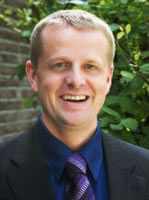 It's been two and a half years since the initial interview with Georg Bettin, the Head of Acme United Europe, was conducted. So it's high time for an update about the European segment and its prospects.
It's been two and a half years since the initial interview with Georg Bettin, the Head of Acme United Europe, was conducted. So it's high time for an update about the European segment and its prospects.
Mr. Bettin, in the past few quarters it has become clear that the business is growing in Europe. As a matter of fact, 2016 could become a record year. What are the main drivers for this accomplishment?
Georg Bettin: Over the years we have taken many different initiatives to grow our business in Europe. The main drivers for our growth continue to be our traditional product ranges from the Westcott and Camillus brands. At the same time we are benefitting from the acquisitions of Cuda and DMT. The latter is expected to add about $400,000 to our sales in 2016.
Let's go into a little more detail by discussing each of Acme's brands and categories in which it's active. First, let's talk about the office products channel. The Westcott brand is seeing some significant growth. Can you explain why that is?
Our customers more and more appreciate the service that we offer them. Acme United's global setup seems to be unique in this channel. And our customers are aware that we have our very own division in Asia that is in direct contact with the factories, guaranteeing quality assurance, delivery times, etc.
Because our service is excellent, our customers almost immediately accepted the new office products that we started offering in the past years, such as rulers, pencil sharpeners, clip boards, etc. Also our new sales director, whom we've hired in April of this year, will help us to continue our growth.
Another very interesting development that has taken place since our initial interview is the launch of the fishing tools brand Cuda. Would you elaborate somewhat on the fishing market in Europe.
As for most products, there's not one fishing market in Europe. Each country has its own traditions, specialties and expectations. Despite this given, we are finding a great deal of interest for Cuda in all European countries. The well thought through specifications of the tools, their excellent quality, and attractive price setting are the key selling points of the Cuda family.
The new extension of the range into high end tools and knives is also very much appreciated. We have already established several distributors in different markets and have a lot of leads after the recent EFTTEX show, the largest fishing tools event in Europe.
How has Cuda performed since its launch in the Europe market?
The performance of Cuda in Europe so far is excellent. Customers are ordering more and also the distribution network is expanding. After attending EFTTEX, we believe that we might break through in several other markets as well.
The entire Cuda line was very well accepted by our existing customers as well as by prospects who visited our booth. Consequently, we expect a big boost in sales in 2016, and even more so early 2017 in preparation of the new fishing season starts.
Even some of our mass market customers are interested in promotional activities. This is always a good indicator of the importance of a certain product group.
Acme United Europe recently received its medical certification, which allows it to import first aid products directly from China. Can you clarify this a little bit and what can we expect from it?
Because first aid has become such an important part of Acme United, through internal growth and acquisitions, we would also like to grow this segment in Europe.
Since many years, we supply customers in the first aid industry with bandage scissors. However, to import more first aid products from Asia, we need to comply with ISO 13485 standards, which ensure that the right working processes are in place.
We received the ISO certification early this year and are now in the process of building a product assortment specifically for the European market. First Aid products should become another important pillar for Acme United Europe.
What does the first aid market look like in Europe?
The first Aid market in Europe is still very fragmented. Many countries have different regulations and laws even when they speak the same language. Our first task is to source products, that are universal in all, or most, European countries. That is cost effective and we create as much synergies as possible.
Unfortunately, we can't use the US assortment in this case, because the regulations for first aid products there are again different from the legal requirements in Europe.
How is the Camillus knives brand performing in Europe at the moment?
Also the knife business is very fragmented in Europe. Most knife sales take place in small stores, like tobacco shops in Germany. Therefore the identification of reliable distributors in the various countries is very important and also time consuming. We are making very good progress in countries such as the UK, Germany, Spain, France and Scandinavia. At the same time, we continue to work hard to expand our distribution in other countries.
The final brand that I would like to highlight is Diamond Machining Technology (DMT), which Acme acquired in February 2016. How well was DMT established in Europe at the time of the acquisition and where do you see growth opportunities?
DMT already had a well-established distributor network in several European countries when Acme acquired the company. We are currently working to fill the white spots on the map where no DMT distributor was active yet.
We discovered from early on that DMT customers had a very high interest in Acme's other assortments as well, like scissors and other cutting tools. It's clear that there are lots of additional sales opportunities for us. The outstanding reputation of our brands and the quality of the products support these plans perfectly.
Is it correct that you have started shipping DMT tools directly from Germany to all your European customers?
Yes, that's correct. Since June of this year, Acme United Europe is warehousing all DMT tools in Solingen and is taking care of the delivery of orders to European customers.
Our customers appreciate this excellent new service level as delivery times have considerably shortened and they don't have to worry anymore about the EUR/USD exchange rate.
Talking about the exchange rate, the European segment had a tough time the past couple of years due to the declining euro against the US dollar. Fortunately, that decline has stopped in recent quarters. Were you able to maintain your margins despite the falling euro?
The decline of the euro has indeed stopped, and we can now rely on a more stable currency situation here. Our customers understood the situation very well and worked together with us on a new pricing level for our products, based on the changed currency situation.
Unfortunately, we are now facing another currency development in the United Kingdom. We bill our UK customers in pounds. Due to the Brexit, that currency has slipped. As a result, we will have to start price negotiations with our British clients.
And as a final question, in the US more and more sales are being generated online. Is that a trend that you're seeing in Europe as well?
Online sales are absolutely becoming more important in Europe as well. In fact, large online retailers have become the price reference for many of our tools. Because of this development, they win lots of orders from large corporations in the office products area.
The major convenience of ordering online and getting your products shipped right to your door surely supports this trend. We're convinced that online sales will continue to become a bigger part of our business.
Mr. Bettin, thank you very much for the interview. - 2. First Aid Only - Born Out of a Drive for Innovation
FIRST AID ONLY - BORN OUT OF A DRIVE FOR INNOVATION
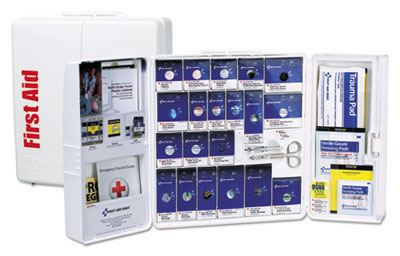 First Aid Only (FAO) was founded by Mark Miller in 1988. After noticing the lack of quality of first aid kits available for home and business use in those days, Mr. Miller put together an all-purpose kit and started offering the product all over the United States.
First Aid Only (FAO) was founded by Mark Miller in 1988. After noticing the lack of quality of first aid kits available for home and business use in those days, Mr. Miller put together an all-purpose kit and started offering the product all over the United States.
Initial small orders were soon booked. But when major retailer Costco started ordering the first aid kit, Mark Miller knew he was on the right track. The deal with Costco gave FAO the opportunity to move into a warehouse and to hire its first employees. Even today, First Aid Only's initial product, the FAO-134 first aid kit remains successful.
In the following years, Mr.Miller continued to expand the company's number of first aid offerings, personnel and clients. By 1992, First Aid Only was generating $3.4 million in sales and moved to a modern 54,000 square-feet facility in Vancouver, Washington where it's still located today. At the time it was much larger than necessary, but the company anticipated continued growth.
That growth reached its peak during the latter part of the 20th century when FAO employed 200 people and reached sales of approximately $26 million annually.
Made in USA
Despite facing stiff competition from firms using lower-cost products, which were produced in foreign factories, CEO Miller maintained his assembly and distribution operations in the United States. A direct result of this decision was that lots of lower margin business was lost to competitors. On the other hand, the increased competition also forced FAO to search for innovative products and improvement of delivery mechanisms for first aid products. This quest would prove to be very lucrative.
In 2006, First Aid Only acquired First Aid Exchange, which owned the rights to SmartCompliance, a first aid solution that makes it convenient for organizations to remain compliant with OSHA (Occupational Safety and Health Administration) and ANSI (American National Standards Institute) standards.
Employers are required to provide medical and first aid personnel and supplies proportionate with the hazards of the workplace. OSHA and ANSI set out critical workplace-safety related standards. Consequently, these agencies determine which first aid products must be present on the work floor, dependent on the circumstances of each workplace and employer.
The SmartCompliance first aid supply cabinets ensure that each business is covered. The cabinets eliminate disorganized and missing supplies, because the SmartTab ezRefill reminders notify a user when it's time to reorder so that supplies never run out when it matters most.
The acquisition gave a new boost to FAO's sales, because well-known major businesses such as McDonalds and Subway started using the SmartCompliance kits in thousands of their restaurants.
Integrating Three Brands
First Aid Only had revenues in 2013 of $17.3 million. In June 2014, Acme United acquired FAO for $13.8 million. Acme United has been in the first aid business for over 40 years and was a competitor of First Aid Only with its PhysiciansCare and Pac-Kit brands. Combined, the three brands are among the top-10 producers of first aid kits in the United States. They accounted for 35% of Acme United's total sales in 2014.
Thanks to the combination of the three brands, the Company increased its volumes, and as such was able to negotiate more favorable sourcing prices for products such as bandages, tapes, and pads with its suppliers.
In addition, late 2015, the production of Pac-Kit was moved from Norwalk, CT to the First Aid Only facility in Vancouver, Washington. This consolidation results in annual savings of about $500,000.
First Aid Only Today
Today, FAO counts well over 100 employees and boasts a distributor network of more than 1,000 people. All first aid kits continue to be produced in the United States and are sold under the First Aid Only brand.
The SmartCompliance cabinets continue to be very successful, as FAO recently received an order for 40,000 SmartCompliance kits from a major retailer in the United States. The kits will be installed in the chain's stores, trucks and warehouses.
In addition, tests with SmartCompliance kits are ongoing at other large US corporations, such as airlines, food chains, large manufacturers and banks. One such order could potentially be worth several hundreds of thousands of dollars.
First Aid Only, and first aid in general, continues to be a significant growth driver for Acme United. - 3. DMT - The Making of an All-American Brand
DMT - THE MAKING OF AN ALL-AMERICAN BRAND
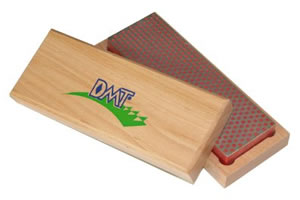 A couple of weeks ago, Acme United acquired Diamond Machining Technology (DMT), the world's leading innovator of manual diamond sharpening technology. The company, renowned for its polka dot pattern diamond surface products, offers sharpening solutions for virtually every user, from do-it-yourselfers to professionals and large commercial operations.
A couple of weeks ago, Acme United acquired Diamond Machining Technology (DMT), the world's leading innovator of manual diamond sharpening technology. The company, renowned for its polka dot pattern diamond surface products, offers sharpening solutions for virtually every user, from do-it-yourselfers to professionals and large commercial operations.
DMT's patented sharpening systems function very efficiently, and are ideal to sharpen, hone, lap or deburr a myriad of products. All DMT products continue to be manufactured in the company's facility in Marlborough, Massachusetts and are sold throughout the world to woodworkers, gardeners, chefs, hunters, fishermen, and knife collectors alike.
We were fortunate to talk with both the founders and the previous owners of Diamond Machining Technology. This is their story.
How It All Began
David Powell, an aerospace engineer, with his wife Elizabeth, an educator in business management, established DMT in 1976, mainly to manufacture large diamond saw blades for quarry use and concrete sawing. Also a sideline of diamond grinding wheels and diamond sanding discs were produced for industrial applications.
When a few years later, the United States released its strategic reserve of industrial diamonds, the price of diamonds, and as such diamond products, dramatically reduced. This event had an immediate impact as foreign manufacturers of diamond blades were able to sell their products cheaper than DMT could.
The increased competition in the diamond saw blade business inspired DMT to look for a product that wasn't out there yet. After lots of testing and development work, a prototype sharpener was developed, which the engineers at DMT then refined to an unbreakable, clean-cutting, and super-fast diamond honing tool.
Out of their small manufacturing facility in Hudson, MA, the first polka dot diamond bench stones were soon thereafter shipped to customers such as Brookstone for use in the woodworking field.
The new sharpener quickly found its way to other sectors as well, such as the automotive, marine, and aviation industries. The reason for the success was simple, it was by far the best sharpening product on the market, as it required no messy oil and never grooved or hollowed. In addition, several DMT patents and the in-house technical knowledge, helped to always stay several steps ahead of the competition.
The surface of a DMT sharpener differs considerably from a competitive product. For example, DMT makes certain that each sharpening surface carries the most diamonds per square inch in the industry. Also the diamond uniformity is key to a sharpener's performance. Therefore, DMT uses a proprietary process that ensures near-perfect consistency in grit size. Finally, DMT sharpeners are engineered to be the flattest on the market, and built to outlast other products, which are variable in surface, and often warped, hollowed or grooved.
A variety of successful new products in receptive markets fueled the company's growth. And when the Powell's started attending foreign trade shows for the hardware and woodworking industries, international expansion took off.
Another major contributor to DMT's success was the fact that it supported the US luge and speedskating teams by providing them sharpening tools. As a result, the company was allowed to print the teams on their packaging with the tagline "Giving them the winning edge".
When the company moved to Marlborough, MA in 1983 it already employed fifteen people. Twelve years later, David & Betsy Powell retired and Mark & Stacey Brandon took over the thriving business.
More Growth and Expansion
Before acquiring DMT, Mark Brandon had worked for a series of international conglomerates, and his wife Stacey was employed at a building products business. They had been looking to acquire a company for a while, and when they identified DMT, they found the right mix of domestic manufacturing, a profitable business and a unique product.
With the new couple at the helm, the company continued to expand the number of distributors domestically and abroad. In addition, more products were launched, catering to users of all tools that cut.
Today, DMT products are sold in dozens of countries all over the world. In addition, the company holds more than 10 patents and has introduced over 125 different products, including 10 in the past five years. And it sells many tens of thousands of items each year to well-known chains such as Home Depot, Amazon, Woodcraft, and many others.
40 Years 'Made in USA' Innovation
In 1976, as the U.S. celebrated its Bicentennial, a small Massachusetts company, started its own revolution, and changed the face of sharpening forever.
Over the next four decades, Diamond Machining Technology built its reputation as a worldwide leader by innovating and producing the highest quality knife and tool diamond sharpeners available - reliable, durable and recognizable through their iconic polka dot design.
Now, Acme United will continue that traditions as it does with its other iconic brands. - 4. How PRO Staffers Help Grow Camillus and Cuda
HOW PRO STAFFERS HELP GROW CAMILLUS AND CUDA
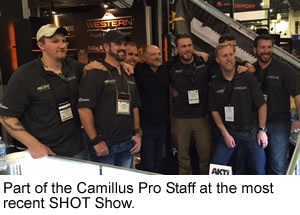 In 2011, Rick Constantine, Acme's Vice President of Marketing & General Manager, was watching an episode of Survivorman in which Les Stroud was dropped in a remote place with no water, no food, no shelter, and no help from the outside. Mr. Constantine felt that Les Stroud would be a perfect match for Camillus, as the TV star embodies everything the knife brand stands for.
In 2011, Rick Constantine, Acme's Vice President of Marketing & General Manager, was watching an episode of Survivorman in which Les Stroud was dropped in a remote place with no water, no food, no shelter, and no help from the outside. Mr. Constantine felt that Les Stroud would be a perfect match for Camillus, as the TV star embodies everything the knife brand stands for.
Rick Constantine got in touch with Les Stroud to discuss some of his ideas. Shortly thereafter Les signed an agreement to co-design and promote Camillus survival knives and tools.
A few weeks later, several of Acme's designers visited Les. They brought along numerous tools from Camillus and other brands to observe closely how Les used them. They watched how he swung a machete, dug a hole, the way he carried the tools on his belt, etc. They basically watched how Les survived with the help of tools.
Armed with that knowledge, the designers went to the drawing board. In 2012, the initial four knives under the Les Stroud Signature name were introduced and immediately sold well. Since then, the Les Stroud line has grown to seventeen different knives, tools and first aid kits. t the 2016 SHOT Show, five new Les Stroud products were launched, a folding knife, two fixed blades, a machete and a sling shot.
Les is involved in almost every aspect of the development including the colors, the ergonomics, the packaging, etc. In addition, he helps promote his tools by joining the Camillus team during trade shows, or by using them in the Survivorman shows that air on TV. The popularity of which continues to grow. His viewership in 2015 was the highest in the show's history.
More Camillus Pro Staffers
Next to Les Stroud, Camillus joined forces with ten other Pro Staffers. Led by former Navy SEAL Jared Ogden, the Camillus Pro Staff consists of former Green Berets, expert hunters, Special Forces, adventurers, firemen and survival experts.
These are true American heroes and the best of the best at what they do. Grady Powell, for example, is a former U.S. Army Green Beret. At 21 years old he was one of the youngest soldiers to make it into the elite brotherhood of Special Forces Operators. In 2013, he competed in a survival race for National Geographic's, Ultimate Survival Alaska TV Show. Grady is now the host of Discovery Channel's Dual Survival.
Jared Ogden, a Navy SEAL who spent eight years in the Naval Service. During his Active Duty years, he deployed to CENTCOM four times and is combat decorated, having been awarded the Bronze Star with "V" for Valor, the Combat Action Ribbon, and multiple Joint Awards. Jared was star of the National Geographic Television program, Ultimate Survival Alaska.
In 2015, Camillus launched the DAGR knife in a collaboration with Grady Powell, and the SKOL knife in a collaboration with Jared Ogden. Both knives are made in the United States and have an abundance of functional features for the modern survivalist, warrior and hunter alike.
Also Brendan McDonough is part of the Camillus Pro Staff. Brendan is a Wildland firefighter and survivalist. He is one of the few firefighters that survived the Yarnell Hill fire on June 30, 2013. Brendan has a book available and a motion picture planned as well.
All these men provide authenticity to the Camillus brand and tools. The information they provide is priceless as most Pro Staffers have been in extremely dangerous and often life-threatening situations where they MUST rely on their gear. They truly have the experience to make Camillus knives better. To learn more about the Camillus Pro Staff, please visit camillusknives.com.
Cuda
When Rick Constantine first thought about launching the Cuda fishing gear brand, he knew, based on his experience with Camillus, that it wasn't enough to have the best tools in the field. He also needed to build a network of fishing experts around the brand to help design, improve and promote the products.
When Mr. Constantine, a passionate charter boat captain and commercial fisherman himself, pitched his ideas to some of the best known anglers in the industry, they immediately agreed to represent the brand.
The stars of the National Geographic hit show "Wicked Tuna", star of the "Real Fishing Show" Bob Izumi, Mariko Izumi from "Hooking Up", and David Dudley two-time FLW Bass Champion all tested the initial tools extensively. In fact, the original 32 Cuda tools were used for nearly two years before the first product was released to the public. It was the most extensive test program in Acme's history. But it paid off in providing numerous product improvements and usages.
Since then, the Cuda Pro Staff has continued to grow to about 30 ambassadors today. Amongst them, is Jimmy Johnson, one of the most recognized sportsmen in the US. He is the first person in football history to win a national collegiate title as a player, serve as head coach to a NCAA championship team, and lead an NFL team to two Super Bowl victories. Jimmy Johnson is basically a football icon, but also an Emmy-winning commentator, and… a fishing enthusiast.
The Pro Staff network really helps to improve the Cuda products. Before any tool is sold to a customer, it goes to the Pro Staff that rigorously tests all aspects of it. Often they'll suggest small improvements, but when the products finally go into production, they truly stand out as they are the best on the market.
Also the promotion which the Pro Staff provides is priceless. Jimmy Johnson, for example, has close to 300,000 Twitter followers. So when he tweets information about Cuda all his followers get to see it. The Pros also use the Cuda tools during tournaments, and they attend Cuda customer meetings to provide testimonials directly to the buyers.
They Help Grow Camillus and Cuda
What started with Les Stroud has quickly grown into a team of more than 40 Pro Staffers, who are all heavily involved in the design and testing process of Camillus and Cuda products.
Utilizing the Pro's experience to get constructive feedback, continues to push Acme's development team to build the very best tools on the market.
2015
- 1. ACME UNITED - 15 Years of Coatings Success
ACME UNITED - 15 Years of Coatings Success
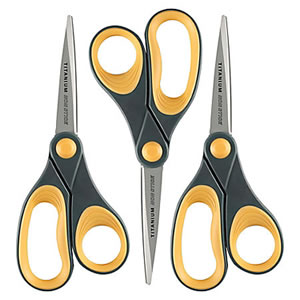
For over four hundred years, the materials in scissors were iron and steel. In the 1960's, manufacturers began making scissors with stainless steel blades and plastic handles. Although the blades, handles and angles of the cuttings were tweaked during the next 40 years, scissors had little additional innovation.
In the year 2000, Acme United began experimenting with very thin coatings that would enhance the hardness of the blades. The Company got its inspiration from carbide drill bits that had just been introduced to the market. Acme had one metallurgist on staff at that time, and asked him to find out if something similar for scissors could be produced.
The First Coating
Shortly thereafter Acme created different concentrations of titanium, nitrogen, and chromium, and began applying them in nanotechnology chambers. Tests showed that certain concentrations of titanium nitride and chromium nitride made surfaces very hard.
The optimal thickness of the coating was determined. This was important, because when the coating is too thin, it doesn't have a real impact, and when it's too thick it breaks. All that work led to a titanium coating with an optimal hardness and strength. This research formed the basis of Acme's original coating utility patent.
The First Customer
Acme introduced the first scissors with a titanium coating in 2002. It had a grey and yellow handle, which today is highly recognized in the market. Although it ended up being one of the best-selling scissors in the world, it wasn't an instant success.
Most customers didn't understand that a blade's ability to stay sharp longer could be enhanced simply by applying a coating to it. This was nanotechnology and was off the mainstream at the time.
The big change occurred at a trade show in Montreal where senior people from Staples stopped at the Company's booth. Samples of the new scissors were handed out, and the wife one of the founders of Staples immediately loved them. The very next day Acme received a call from a buyer at Staples, with the first big purchase order.
Sales took off. The scissors went chain-wide at Staples, and soon also at Office Depot, Target, and Walmart. Next they went to Canada, Europe, and Asia.
Stronger and Better
Acme repeated its titanium scissors' success with other tools. It applied the titanium coatings to knives, paper trimmers, and pencil sharpeners. Customers noticed the difference rapidly and opted to buy the new, revolutionary products.
The Company began investigating new compositions to further increase the hardness of its coatings. The initial chromium nitride coating was about 5 to 10 times harder than stainless steel. However, after several years of research, Acme's scientists developed a carbo-nitrite coating, which was between 10 and 50 times harder than regular stainless steel. It was almost diamond-like. That coating was applied to high quality industrial cutting items, such as knives and shears, and was quickly recognized in the market.
In more recent years, a ceramic non-stick coating was developed to make blades useful in difficult environments. The Company's non-stick shears and knives permitted use in heavy tar and viscous industrial applications. Its non-stick knives and pruners were quickly recognized for their ease of use in cutting and trimming flowers, plants, and bushes. Teachers, artists, and students began using Acme's non-stick scissors in arts and crafts where lots of glue and paste were used. In addition, the Company's non-stick coating made blades and tools rust resistant, acting as a very durable barrier between the blades and corrosive fluids.
Acme uses its proprietary dual-passivation technology to create highly rust-resistant tools. Here the stainless steel is treated in two different chemical baths. The results are impressive as the tools can resist rusting even when they're subjected to salt spray tests for 500 hours. The Company's highly successful Cuda fishing tools use dual-passivation steel, and are widely acclaimed for their rust resistance in salt water.
The Need For New Coatings
While Acme had only one metallurgist on staff 15 years ago, it now has its own lab with scale-up facilities, chemists, technicians, metallurgists, and chemical engineers. There's an entire team working on coatings to continue to improve the performance of the products.
The Clauss and Camillus brands are leading the development for new and enhanced coatings for extreme environments.
Conclusion
All in all, hundreds of Acme's products now have one or more coatings. They are protected by about 150 patents issued by many countries all over the world. An entire team is constantly working on new coatings and new applications. This is important, as with many new developments, new patent applications can be filed.
Coatings have become part of what separates Acme United from its competitors. It's even fair to say that the future of Acme is in part tied to how well new coatings are developed. They provide opportunities for enhancing product performance, increase the customer experience, and help drive the Company's growth. - 2. Camillus - A Journey Through the History of Knife Making in the United States
CAMILLUS - A JOURNEY THROUGH THE HISTORY OF KNIFE MAKING IN THE UNITED STATES
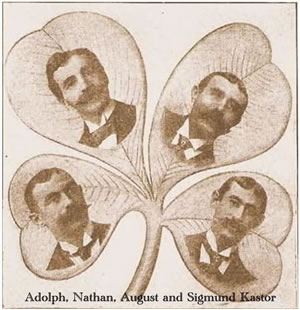 The Camillus Cutlery Company was one of the oldest knife manufacturers in the United States. The Company has its roots dating back to 1876 and produced millions of knives until it filed for bankruptcy in 2007. Acme United purchased the brand name and intellectual property rights and successfully re-launched Camillus in 2009.
The Camillus Cutlery Company was one of the oldest knife manufacturers in the United States. The Company has its roots dating back to 1876 and produced millions of knives until it filed for bankruptcy in 2007. Acme United purchased the brand name and intellectual property rights and successfully re-launched Camillus in 2009.
Adolph Kastor
In 1870, Adolph Kastor, a 14-year old boy from Wattenheim, Germany immigrated to New York. As soon as the youngster arrived in the country of his dreams, he started working at his uncle's hardware supply chain business. Adolph was first assigned to the lowly job of overseeing cow chains, but gradually worked his way up to the firearms and finally the cutlery department.
Due to poor sales figures, his uncle's company had to close its doors. The problem, as Adolph saw it, was that the firm represented everything in general and nothing in particular. He decided to do things differently.
In 1876, along with a few of his brothers who had also immigrated to the United States, Adolph formed A. Kastor & Bros. The business was located on Canal Street in New York City and specialized in importing and distributing German made knives. Who could have guessed this was the seed of what would later become one of the best known cutleries in the United States.
From Importing to Manufacturing
In 1897 a political change occurred, which gave the cutlery business in the United States an unseen boost. The Dingley Tariff levied high taxes on all imported steel goods and made importing knives from Europe too costly.
The only solution the Kastor brothers saw was to manufacture knives domestically. Eventually, their search for a suited cutlery led him to Charles Sherwood and his small knife manufacturing business in Camillus, NY.
In 1894, Charles E. Sherwood, along with his brother-in-law Denton E. Bingham had opened a small penknife factory in Camillus. The fledging company wasn't very successful however. About twenty English trained cutlers turned out fifteen different patterns. But that all soon changed in 1902 when the Kastors bought the plant.
With Adolph Kastor in the driver's seat, the cutlery started to expand. New machinery, such as steam driven drop forge hammers and fly presses was brought in. By 1910, the Camillus Cutlery Company was producing close to a million knives a year and had about 200 employees, many of them German immigrants.
War & Civilian Production
During both the first and second World War, Camillus truly excelled, as it shifted production to support the allied forces. In World War II, for example, the company shipped more than 13 million knives of various styles. And it also manufactured surgical scalpels and a folding knife/spoon combination for the Red Cross.
After 1945, Camillus again focused on civilian production. In 1947, for instance, it released a full line of official folding knives for the Boy Scouts of America. The company continued to grow as it bought new machinery, developed new techniques and added more knives patterns to its already wide product range.
In 1991, Camillus acquired Western Cutlery Company, which had been producing knives since 1896.
The Road to Bankruptcy
Since the turn of the century, the cutlery saw its revenues decline due to stiff overseas competition. This trend had already started in the late 1970s. First from Japanese manufacturers, and later from Taiwanese and Chinese competitors.
Finally, in 2007, Camillus had to file for bankruptcy as customers had almost completely dried up. Later that year, Acme United purchased the product brand names and intellectual property of the company.
Camillus as Acme United Brand
Less than two years later, Acme re-launched Camillus at the 2009 National Hardware Show in Las Vegas. The traditional Camillus knives were entirely replaced by new modern knives with durable handles and titanium carbonitride coated blades.
Late 2011, Acme United signed an agreement to manufacture and sell Camillus survival knives and tools, co-designed and promoted by Les Stroud, the star of the hit TV series Survivorman. The initial four knives under the Les Stroud Signature name were introduced in 2012 and immediately sold well. Since then, the Les Stroud line has grown to ten knives, tools and first aid kits. Some of them are used in the 16 Survivorman shows that aired in 2015.
Next to Les Stroud, Camillus also joined forces with Jared Ogden and Grady Powell, two stars in the highly popular TV show Ultimate Survival Alaska as seen on the National Geographic Channel. In collaboration with the two, Camillus launched a new line of combat knives, which Navy SEAL and Green Beret Ogden & Powell use in the current season of the show.
In 2013, Acme United also re-launched the Camillus brand in Europe and soon attracted distributors for the Scandinavian and German speaking countries. Camillus is currently being distributed in twelve European countries. And Acme intends to further expand the number of Camillus distributors in Europe, Canada, the US, but also in countries such as Australia, South Africa and the Philippines.
Although a majority of the Camillus knives are still manufactured in the far east, each year more production is being handled in the United States.
In the meanwhile, many new Camillus knives with folding and fixed blades continue to be launched annually for the hunting, fishing and recreational markets. It's fair to say that Camillus has once again become one of the leading knife manufacturers. - 3. Interview with John Ward, General Manager Acme United Canada
INTERVIEW JOHN WARD, GENERAL MANAGER ACME UNITED CANADA

John you joined Acme United Canada as General Manager in October 2013. Can you give us some more background information on yourself, how you got started at Acme United Canada and what your current job entails?
Absolutely. Prior to coming to Acme United Canada, I was with Newell Rubbermaid, a well-known corporation with numerous brands, such as Irwin Tools, Paper Mate, Dymo Labeling, etc.
Before I joined Newell Rubbermaid, I worked at Esselte, a manufacturer of office supplies. It was in those days that I had gotten to know Walter Johnsen and Bryan Olschan of Acme United. I also knew the gentlemen who held the position of General Manager at Acme United Canada before me. When he mentioned he was retiring, I asked him for the recruiter's name. That's how I ended up at Acme.
In the past, I've ran marketing and sales departments. And through a few of the companies I've been with, I also ran special order departments where I was involved with purchasing, manufacturing as well warehousing. That diverse background has helped me a lot as in my current position. Because it's a relatively small company I get involved in practically all aspects of it.
Would you tell us a bit more about Acme United Canada in general? How many employees are there, and can you break that number down by function as well?
Twenty-two people are employed here, thirteen in the office and nine in our warehouse. We have our marketing team, our finance and accounting departments and someone in HR. We're mainly a sales and marketing company that procures product from out of Canada. We don't do any manufacturing here, but we do have a distribution facility.
Office products sales have somewhat slowed down in recent quarters. What's the main reason for this decline?
People are using different tools than they used to at the office to get their job done. Where in the past lots of documents were printed to share them with colleagues and customers, nowadays, people use PowerPoint presentations and hard drives. So certain paper sales are down, along with the products that support paper, such as binding machines, three ring binders, file folders, hanging folders, etc. The entire industry is faced with a declining office products base.
As a result, many of our customers are really struggling. They're closing stores and consolidating while trying to reinvent themselves. Some have a goal to become the next Amazon by broadly expanding their offerings. For example, they are very interested in carrying our Cuda fishing gear, our Camillus knives, and our lawn & garden tools. All new categories. That's where they see their future.
Do you generate most of your sales through distributors or directly to customers?
I would say that 85% of our business is generated by selling directly to our customers.
Now that we've had an introduction to the Canadian division, let's turn our attention to how Acme United's different brands are faring in Canada. First, Acme's foremost brand Westcott with its star products, scissors, rulers, and the iPoint pencil sharpener. Is this brand equally as important in Canada as it is in the United States?
Yes it is. And although Westcott sales our down this year, it's important to emphasize that we are gaining market share, as we continue to add new customers. The majority of our sales shortfalls in office supplies are economic driven.
How important is the back-to-school season for Westcott and Acme in Canada?
It's critical to our bottom line. But at the same time we're working very hard to make our other brands grow even faster. Our goal is to spread our business more evenly over all our brands. We have the resources to be able to grow our back to school business and our other brands at the same time.
The past quarters we've seen a sharp increase in first aid product sales in the United States. Do you notice the same trend in Canada?
Well, we don't have Canadian regulated first aid products yet, but we're currently working with First Aid Only to develop products that can be approved. We need Canadian drug numbers, Canadian drug establishment licenses, our packaging needs to be bilingual, our products need to have lot numbers, and they have to be packaged a certain way.
So far, we have made excellent progress, and right now we're putting the first aid kits together. We'll be launching these products in 2016. We expect them to go into a number of commercial catalogues, two major commercial dealers, as well as having support from SP Richards on a wholesale level.
First aid is really an exciting opportunity for us, on which we're spending a lot of time. We can create products for the pet, fishing, and hunting market. We already have strong relationships with mass marketers and several do-it-yourself stores like Lowe's. So we have plenty of opportunity to place our products.
Moving over to the Cuda fishing tools brand. You yourself being an avid angler, it must have been very exciting to launch the brand in Canada last year?
It sure was. The brand has been received well, and it has lots of upside potential. Cuda gets terrific coverage and consultations from key anglers, some of who are in the fishing hall of fame in Canada. Bob Izumi, star of the "Real Fishing Show" is supporting us along with his brother Wayne. Also his niece Mariko Izumi, who is the spokesperson for the popular TV channel "World Fishing Network", is on board with us. In addition, we've signed up another television show called "Canada In The Rough" that airs in Canada, the U.S. and Europe.
We also created our very first TV commercial, which airs in prime time slots on Wild TV, and on Jim Shockey's Hunting Adventures, the number one show on Wild TV.
We've created an exceptional product line at a reasonable price, which offers tremendous value for any fisherman. Right now we're getting ready to launch our freshwater portion of the line. That could actually become 5 to 10 times larger than the salt water market.
With millions of active anglers in Canada, what's the potential of Cuda you think?
Hard to say because our fresh water line hasn't launched yet, but I guess that in the next few years we should be able to get sales up into the $4 to $5 million range.
Next, we have Clauss, that offers professional grade tools in several industries. Which tools from this brand stand out in Canada?
Definitely the lawn and garden tools, which we launched in partnership with ScottsMiracle-Gro. In the tool market we face some fierce competition, but in the lawn and garden segment there was a bit of an opening. And having the Scotts and Miracle-Gro brands on our tools is really helpful. So that's definitely where our focus is right now.
A final brand I'd like to discuss is Camillus knives. Can you give some more background information on the Canadian knife market, and how Camillus is fitting in there?
First of all, the Canadian knife market is significantly different from the U.S. knife market. In the U.S., military is a big part of the culture, and many people collect tactical knives. The Canadian culture is very different. For example, few stores over here will carry a large assortment tactical knives, bayonets, or tomahawks.
We are a sporting nation though. And hunting is a big deal. So some of the new Camillus products that are being prepared definitely have more of a hunting feel. We believe that should really help grow our business in Canada.
We already discussed the issues with currency fluctuations, but the flip side of the declining Canadian dollar is that company valuations in Canada have become much more attractive for a U.S. company. So do you see any potential acquisitions in Canada?
Yes, absolutely. And as a matter of fact, we are pursuing a few things at the moment.
Where would you want Acme United Canada to be 12 to 18 months from now?
I'd like us to be further penetrated in the hunting, the lawn and garden, the fishing, and the first-aid markets. There's so much potential in each one of those. And that's what we're truly focused on.
Looking a bit further into the future, our goal is to make Acme United Canada an $18 to $20 million business in the next five years. - 4. How Westcott Became a Leading School and Office Brand
HOW WESTCOTT BECAME A LEADING SCHOOL AND OFFICE BRAND
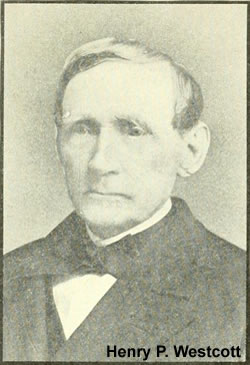
To find the roots of the Westcott brand, we have to go back to 1872. In that year, Henry P. Westcott, along with his two sons Charles and Frank, established the firm Westcott Brothers in Seneca Falls, New York. The company manufactured a variety of wooden products such as trellis units and furniture used by printers.
The business soon proved to be a success, mainly because Henry Westcott invented and built machinery to manufacture the wooden products they sold, while competitors were still making them by hand. In the meanwhile, his two sons sold the products and ran the factory.
When C. E. and M. R. Jewell joined the business in 1894 it was renamed to Westcott-Jewell Company. Soon thereafter they began concentrating on manufacturing rulers in all sizes and finishes, both for office use and for advertising purposes. It marked the start of a flourishing period for the company.
By 1904, only ten years later, Westcott-Jewell employed about a hundred people and its plant was one of the largest of its kind in the United States with a total floor space of 45,000 square feet. The company's rulers were shipped to all parts of the United States and exported to many other countries. To better reflect its ruler activities the company changed its name to Westcott Rule Co. in 1920.
Westcott Rule continued to expand and soon became one of the leading ruler manufacturers in the world. In 1968, the company, after being controlled by the Westcott family for 96 years, was acquired by Acme Shear Company, which would be renamed to Acme United Corporation in 1971.
But that wasn't the end for Westcott… to the contrary. Because it was such a well-known brand, Acme started selling other school and office products under the Westcott name.
Today, Westcott is on hundreds of different products such as paper trimmers, pencil sharpeners, erasers, math tools, craft tools, scissors, and of course rulers. In fact, with sales between 60 and 80 million scissors and 15 to 18 million rulers annually, Westcott is a leading manufacturer in those product categories.
In more recent years it has also changed the pencil sharpener market with the innovative iPoint. The sharpener's award-winning design and ease of use make it one of Acme United's best selling products.
The key to the brand's success is truly its constant drive for innovation. In 2005, for example, Westcott was the first brand to introduce scissors with Titanium bonded blades, making them three times harder than stainless steel. Five years later it was also the first to launch non-stick titanium blades, making them useful in difficult environments like the floral area for cutting and trimming flowers and bushes, or in the arts and crafts area, where lots of glue and paste is used. Also, some school and office products have Microban antimicrobial protection added during the manufacturing process to prevent the growth of bacteria on the surface.
So 143 years after its humble beginnings, Westcott continues to stay one step ahead of its competition by optimizing its manufacturing process and by improving the materials it uses. A legacy that Henry P. Westcott would sure be proud of. For more information visit http://www.westcottbrand.com.
- 5. Interview with Rick Constantine - Vice President of Marketing & General Manager at Acme United
INTERVIEW RICK CONSTANTINE - VICE PRESIDENT OF MARKETING & GENERAL MANAGER AT ACME UNITED
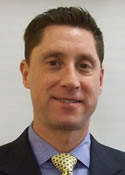
Mr. Constantine, to start, can you give us some more background information on yourself, how did it all begin at Acme United for you and what does your current job entail?
My career began at U.S. Surgical Corp. where I was responsible for their endoscopic and laparoscopic education, packaging and manuals. After four years, I moved on to Conair Corporation where I experienced great success in new product development and was awarded five U.S. patents.
I then went to Newell Rubbermaid where I continued my passion for marketing and new product development. It was at Newell where I was promoted to Global Director and was able to utilize my skills and background to market globally.
After about 6 years, I received a call from a recruiter saying, "You really need to speak with the team at Acme United." I reviewed the website and did a good amount of research, but was unsure if it was a good fit. I was intrigued enough to meet the team and from that day, I knew it was where I belonged. Since the first day, Acme has allowed me to create, strategize and develop a business unit that has flourished in my 10 years that I've been with the Company.
My current position entails driving the business unit to exceed in marketing, packaging, new product development, and most of all, to strategize on line extensions and new segments to capture.
Now that we know a bit more about who you are and what you do, I suggest that we go over each one of the four brands that you manage for Acme United. First of all, let's discuss Camillus Knives. Re-launching the knife brand late 2008 couldn't have been easy, knowing that you had to build the brand back from scratch, while for more than a hundred years Camillus Cutlery had been a synonym for the finest knives available. How did you handle it?
It was a challenge for sure. Acme purchased the intellectual properties, trademarks, etc. but did not have a supplier base, sales data, inventory or other materials to restart the brand. We truly started from scratch.
The first objective was to understand what we wanted the brand to stand for. The answer was to honor the Camillus past by bringing some of the design language forward while injecting the innovation that only Acme can bring. Once we completed building the brand strategy and hand selected the very best factories in the USA and Asia, we were ready to reinvigorate the brand.
We decided to bring back a few of the original Camillus designs from the past and simultaneously launch some brand new designs as well. The strategy was to start with the Camillus Cuda Quick Launch knife using Japanese AUS-8 steel and also bolster the line with knives using high-end VG10 steel. We applied our greatest bonding technology yet, Carbonitride Titanium to ensure a successful launch.
The knives were built with incredible quality and sold at an attractive price point. In 2009, Camillus arrived as a formidable competitor in the hunting, tactical, survival and everyday carry knife segment.
Soon after the re-launch, consumers again embraced the renewed Camillus. In 2011 you started a successful cooperation with "Survivorman" Les Stroud that continues to this day. Can you share how that came about and how exactly you collaborate with him to produce new tools each year.
I was always a fan of "Survivorman". You could tell Les was the real deal. He was the only media star to star, film, narrate and edit his own show. If that wasn't impressive enough, the Survivorman concept was to go to a remote location with no food, water or crew and survive alone for ten days. His dedication, drive and creativity to survive was the reason why we pursued Les Stroud.
I tracked down his team and wrote a few emails in hopes to obtain an introduction. Within days, I was directly speaking with Les on the phone and a few weeks later, I was in his office with a design team picking his brain.
We filmed how he held a knife or machete, how he would make tinder from a branch, how he would dig a hole or clear a plot. We asked him to relive his most challenging survival situations in order to understand what we needed as stimulus for his new line. Les was very involved in every aspect of the development. He would continuously say, "The tools must exceed my expectations and have to be a product line I and my fans will be proud of. They should be heritage pieces…"
From there we created product concepts and started to strategize which components aligned with Les' survival needs. About ten months later, we launched the first four co-branded knives at Shot Show. From there, Camillus achieved incredible success and immediately gained nationwide distribution.
In the meantime, the Les Stroud Survivorman line has grown to 10 knives, tools and first aid kits. Camillus will be launching an additional 9 new products mid-2015. We look forward to continued success with Les, who is launching 16 new Survivorman shows in 2015.
The second knife brand that you manage is Western. What can you tell us about it?
Western is a brand with strong value, quality, and technology and focuses on the hunting and everyday carry segment. The brand launched in 2011 and featured western designs from the past. In 2015, Western has received a facelift with all new designs, logo and packaging.
The new brand strategy and twelve new designs were launched at this year's Shot Show with remarkable success. The new products feature Titanium Bonded steel, come with a lifetime guarantee and all have a suggested retail price of under $29.99.
In general, what's your view on the current state of the knife industry in the United States and abroad, and how do you see it progressing?
I think the knife industry is alive and well, given the unbelievable flow of new designs and innovations presented at the past Shot Show. Camillus sales grew at a rapid pace in 2014 and our 2015 estimates are very promising. Our sales in Canada and Europe also look good.
We're exhibiting at this year's IWA Outdoor show in Nuremberg, Germany, which is one of the largest outdoors shows in Europe. Camillus exhibited for the first time at IWA last year and experienced fantastic success. In addition, our team in Canada has opened up a great deal of new distribution. Based upon our European and Canadian teams success, I believe the knife industry is doing very well.
Although knife manufacturing is a very old industry, it still seems quite fragmented. Do you believe there will be more consolidations down the road?
It's hard to tell, because so much depends on the economy and demand. We're all competing to provide the most unique designs at a price that works. My guess is there will be some consolidations in 2015. Larger brands will be looking to bolster their offerings in order to build a stronger and more complete product assortment.
The next brand is Clauss, which offers a substantial line of cutting tools for professionals. Can you describe some of the latest products that were released under this brand?
The Clauss brand experienced strong growth in 2014 thanks to many new products that we brought to the market. For example, we launched a new lawn & garden product line in cooperation with the Scotts MiracleGro brand with success. Clauss also released a complete new line of drywall tools featuring our Titanium non-stick technology, which experienced instant success. We expect substantial growth in the garden and drywall segment in 2015.
The final and most recent brand that you manage is Cuda. Fishing gear is an entirely new category for Acme. How did you get the idea?
I think that Cuda is going to be a success for Acme. I have been fishing for 40 years and am a United States Coast Guard Captain, charter captain and commercial fisherman. I've had years of experience with all types of fishing tools and was sure we could build the ultimate fishing tool product line by combining my experience together with Acme's intellectual properties.
I wanted to make sure we launched a product line that was different in regards to disruptive technology, vibrant aesthetics and value, backed by a lifetime guarantee. We launched the brand in July 2014 at the iCast show in Orlando and immediately won a "Best of Show" award in the FishSmart Tackle category. It was truly an honor for the team and the brand received lots of interest from that point forward.
Coming up with an idea and developing it is one thing, it's something altogether different to get it sold. Can you describe the process of getting a product on the shelves of a big chain?
The Cuda brand has been under development for years, which allowed us to select the right technology, quality and assortment of tools. We've successfully combined our new Titanium Passivation technology, German 4116 steel, and poly carbonate cold-molded grips. We also did an extensive market study to ensure our competitive position in the fishing product market.
The final component was to attract the "best of the best" to represent the brand. The stars of the National Geographic hit show "Wicked Tuna", star of the "Real Fishing Show" Bob Izumi, Mariko Izumi from "Hooking Up", and David Dudley two-time FLW Bass Champion all tested our tools extensively and have been ambassadors ever since. We even bring our pros to customer meetings so they can provide their testimonials directly to the buyers. The Cuda development and launch was a complete team effort as far as strategy, development, testing and marketing is concerned. We are truly set up for success.
Please tell us a bit more about those well-known Cuda pros. What will they do for Cuda and do they co-design the tools as well?
We have over twenty pros who are all heavily involved in the design and testing process. In fact, the original 32 Cuda tools were used for nearly a year before the first product was released to the public. It was the most extensive test program in Acme's history. The testing process paid off in providing numerous product improvements and usages. The test comments even provided the team with clear and concise usages for a visual retail package.
Our pros will continue to push the development team to build the very best tools and products. Our customers will also be able to see our pros as we'll bring them to tournaments and personal appearances to represent our brand.
Now that the Cuda brand is launched where do you expect it to be in a couple of years?
There are of course many competitors who are significantly larger than Cuda. That said, I fully expect Cuda to become a leading fishing tools brand.
We have a lot of patents, and we're confident our technologies and quality will quickly propel us to the angler's favorite fishing brand. As the Cuda brand continues to gain excitement, we will build it into a lifestyle brand. The objective is to own the fishing experience from the time the angler leaves the house to when they return home with their catch.
Cuda will be the brand that helps them carry their fishing tools and gear, make the bait, prepare the lines, clean the fish and makes them look good all day long with brand apparel.
Mr. Constantine, thank you very much for this interview. - 6. How the iPoint Revolutionized the Pencil Sharpener Market
How the iPoint Revolutionized the Pencil Sharpener Market
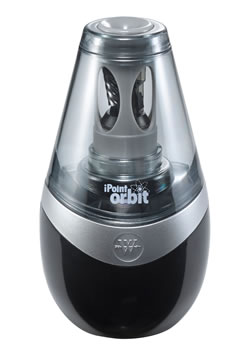 It all started with the idea to turn a boring, everyday pencil sharpener into a stylish electronic device that could proudly be displayed on any desk.
It all started with the idea to turn a boring, everyday pencil sharpener into a stylish electronic device that could proudly be displayed on any desk.
In 2005, Acme's Westcott team, along with a design firm, revolutionized the pencil sharpener market. They came up with a vertically positioned device, instead of the traditional horizontal one. It featured patented titanium bonded blades that stay sharp three times longer than competitive products and a see-through shavings reservoir that makes it easy to see when the sharpener needs emptying. To make the package complete, it had an auto feed function so you can simply place the pencil in the sharpener and sit back, and it had an auto sensor shut off that cuts off power once the pencil is at the perfect point. The iPoint was born!
From early on, the iPoint generated strong customer response and a lot of retail excitement. The number of retail chains selling the iPoint quickly rose and available shelf space grew as competitors had become obsolete overnight.
In subsequent years the iPoint's success continued to expand, mainly driven by customer demand. Meanwhile, the iPoint Razor (2007), Curve (2008) and Evolution (2009) were added to the family. As of 2009, Acme's quarterly sales numbers were strongly impacted by the sharpener's sales.
In 2010, the iPoint was distributed internationally, and by 2011, only five years after its launch, the iPoint became Acme United's single best selling product. The sharpener's revenues in that year reached about $11 million on total sales of $73 million.
The following year, several high-performance sharpeners for offices and teachers were introduced. And in 2014, the Orbit became the latest in the iPoint series. It builds on the known iPoint formula with a slick design and several attractive features, like non-stick titanium bonded blades, which resist graphite buildup when sharpening colored pencils.
Awards
Long gone are the days where a tool merely had to function for it to sell well. Nowadays, consumers have an almost endless choice of impeccable working products. As a result, manufacturers need to go the extra mile to produce outstanding items with additional features and… a fabulous design. Several members of the iPoint family have already won prestigious awards.
Back in 2006, Acme's original iPoint battery powered pencil sharpener immediately won a GOOD DESIGN award. Since then, the iPoint Evolution (2010) and the iPoint Orbit (2014) achieved the same feat.
GOOD DESIGN is an award from the Chicago Athenaeum, Museum of Architecture and Design and is one of the oldest and most important design competitions worldwide. Each year, the Museum receives hundreds of submissions from over 40 countries. Well-known brands such as Apple, Hewlett Packard, BMW, Porsche and Microsoft compete to win a much coveted award.
In addition, the original iPoint and the iPoint Evolution Axis both won a Teachers' Choice Award.
For 20 years, the Teachers' Choice Awards have heralded the very best in classroom-tested, teacher-recommended products. Each year, a nationwide panel of teacher-judges names the standouts in books, classroom supplies, educational games, software, websites, and more. After receiving top ratings in two rounds of rigorous judging, the winners are chosen.
Today
Today, the Westcott iPoint pencil sharpener comes in many different shapes, sizes and colors, and remains Acme's best-selling product. Its trendy design and ease of use have made it a phenomenal success. It has truly become an iconic product in its category that brings a sense of style to any desk. - 7. Clauss Scissors Help World War II POW Survive
CLAUSS SCISSORS HELP SURVIVE WORLD WAR II POW
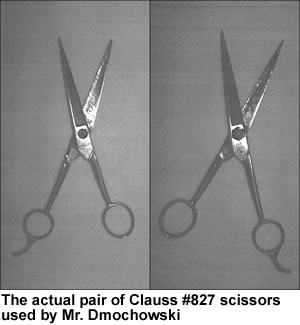 This is an fascinating story about Mr. Myron Dmochowski, a ball turret gunner on a B-17 bomber during World War II. He reported to the European Theatre of Operations (ETO) in September 1943. After making numerous successful flights, disaster struck.
This is an fascinating story about Mr. Myron Dmochowski, a ball turret gunner on a B-17 bomber during World War II. He reported to the European Theatre of Operations (ETO) in September 1943. After making numerous successful flights, disaster struck.
On January 11, 1944, Mr. Dmochowski's airplane, called the "Rationed Passion", took off at Thurleigh Airfield in England with a mission to bombard a Junkers aircraft factory in Halberstadt, Germany. During the flight, the B-17 was intercepted by an enemy fighter and hit hard, causing the plane to go into a spin.
A raging fire ensued and Mr. Dmochowski bailed out with his parachute, landing near the Dutch town of Nijverdal, where he was captured by German soldiers.
Shortly thereafter he was transferred to Stalag Luft I, a prisoner-of-war camp for captured airmen near a small town called Barth in northern Germany. The camp imprisoned approximately 9,000 American, British, and Canadian airmen.
Bartering in Barth
As was customary at most POW camps, Stalag Luft I had an official internal bartering system, called a Foodacco. It was kind of a trading post where items could be exchanged. Anyone with a surplus of food for example, could trade on a point-value basis for other goods such as cigarettes.
Mr. Dmochowski wanted to participate in the trading system and came up with a brilliant idea. He acquired a pair of Clauss scissors from a German guard in return for cigarettes. During the rest of his incarceration, he used the scissors to cut the hair from the other prisoners of war. He basically exchanged a haircut for other items he wanted and needed.
The Clauss #827
The scissors he used were Clauss #827. On one side it has the words "Clauss Cut. Co." and under that in smaller letters is "Germany". On the other side is the word "Clauss" in fancy script. These typical barber shears were manufactured in Germany and were intended for export to the U.S., hence the word "Germany" inscribed on them, rather than "Deutschland".
Right after World War I, Clauss had opened a manufacturing plant in Solingen, Germany, a city known for the best cutlery in the world, because German made shears were sold at half the price of American made shears. This was made possible as Germany was permitted to export certain goods duty-free to the United States to help pay back its World War I debts.
During World War II, the German cutlery factories in Solingen converted to war materials. Many, including the Henkel-Clauss factory, were destroyed near the end of the war. So it's fair to assume that Mr. Dmochowski's shears were manufactured between the early 1920s and 1939.
The Aftermath
On April 30, 1945, Stalag Luft I was liberated by Russian soldiers and Mr. Dmochowski returned safely to the United States some time later.
This is a true testimony of people always trying to make the best out of any situation. At the same time, it shows how a simple object as a Clauss scissors can make a difference in one's life. For more information visit http://www.claussco.com.
2014
- 1. Interview with YB Pek, Senior Vice President and General Manager Acme United Asia
INTERVIEW WITH YB PEK, SENIOR VICE PRESIDENT AND GENERAL MANAGER ACME UNITED ASIA
 Mr. Pek, you joined Acme United Asia in February of 2011 as Vice President and General Manager. Can you provide us some more information on yourself and on what exactly your job entails?
Mr. Pek, you joined Acme United Asia in February of 2011 as Vice President and General Manager. Can you provide us some more information on yourself and on what exactly your job entails?
I was born in Singapore and started my career there in 1993 with Motorola Electronics as a process engineer. I relocated to Hong Kong to join Philips in 2000 where I had the opportunity to work within several different business units in Hong Kong, Shenzhen, Nanjing and Zhuhai, China.
In February of 2011, I joined Acme United Asia as Vice President and General Manager. My job responsibilities are to manage the Asian direct sales, the development of new product and coatings, sourcing, quality control and supply chain activities.
As you just mentioned, the Asian sales team handles direct import sales to major North American and European customers. How does that work and how does it compare with smaller buyers?
Under direct import sales we understand all products sold by Acme United Asia directly to major North American and European customers. These products are either sold under an Acme brand or a customer's private label.
Our sales, product, quality and supply chain teams work with each customer's direct import protocols. In addition, each product has to meet each customer's specific packaging and quality requirements.
This is the major difference with products for other buyers, where we use Acme United packaging and quality standards.
The sales team is also responsible for sales to Asian customers. How would you characterize the Asian market for Acme's products and where is it different from the North American and European markets?
There are a few typical aspects about the Asian office and stationery products industry:
a/ Demand is lower compared with North American and European markets because the consumer buying behavior in Asia is totally different.
b/ There tend to be more "Asian style" products, especially with animated characters and cartoons.
c/ Product assortment is less extensive than in North America and Europe.
Are Acme's Asian customers large international chains or local stores?
Our customers are about 80% large international or local chains, and 20% small local stores.
Which countries in Asia generate most revenues for Acme at the moment and how do you foresee sales to develop in the coming years?
Asia is a key strategic growth market for Acme United, not only because of the region's vast population but also because consumer spending continues to increase. In addition, there's a strong appetite for quality American branded products. At this moment, the majority of our sales are generated in Australia, the Philippines, Thailand, South Korea and China.
It's important to note that each market in Asia is unique in terms of culture, consumption pattern, customer preferences, etc. Therefore, we focus our efforts on a few key markets in order to maximize the support to our distributors. Once we feel we've established ourselves in these markets, we'll continue to develop new key markets in the region.
One of the most intriguing teams you're heading is the New Product & Coatings Development team, which advances ideas into actual products. Could you briefly explain how this is done?
Our New Product & Coatings Development team works with a 5-phase development cycle. Each cycle is different depending on the product complexity and required degree of innovation. Because Acme United's products are quite diverse, the team members must have a broad technical knowledge.
Phase 1 - Product Concept Creation: In many cases, Acme's marketing and brand managers come up with new product ideas. They provide us a concept, along with the features they want the product to have and pricing information. At the same time, our team may propose product concepts based on new technologies, materials or certain cost optimization ideas.
Phase 2 - Feasibility Study: Next, the team will conduct a feasibility study on each new product concept to determine if it can be industrialized and manufactured. Such a feasibility study includes preliminary construction design, material research, function mock-up (by 3D printer), and functionality testing. When the feasibility study is successfully completed, a technical package, including a bill of material, rendering drawing and construction design, is developed.
Phase 3 - Detail Construction Design And Tooling Development: During the third phase, we'll start work on the toolings, necessary to manufacture the products. We design most of the key components in-house to ensure that we retain the intellectual property rights. At the same time, we start selecting our manufacturing partners for each component.
Phase 4 - Product Validation And Mass Production Ramp-Up: Before mass production of the new product is initiated, the team and the chosen manufacturing partners, evaluate the pre-production samples to ensure the product's quality and functionality. Only when we're satisfied with all aspects of the samples we give the go-ahead for mass production.
Phase 5 - Product Life Cycle Management: After the new product has successfully been launched, the team evaluates all feedback received in terms of functionality, and continues to improve the product where possible. This is an important step to perfect the product and it also gives us valuable input for following products.
Quality control is another important task of the Asian team. What is the quality control strategy undertaken by the Asian team?
First, it's important to explain that at Acme United Asia we have several Product Teams, that each support one of Acme's global brands. Each team has its own product specialists, supply chain planners and quality control inspectors to ensure that each Product Manager has all the necessary resources and competences to support the brand. Quality control is one of the most important tasks of the Product team.
Over the past three and a half years, we've been refining our quality control process. Instead of conducting the traditional final product inspection with manufacturing partners, we now perform in-process inspections. This way, we detect any quality issues before the final products are manufactured. It helps us a great deal to be more proactive in managing our quality control processes instead of being reactive.
Acme considers the relationship with its suppliers of paramount importance. How many suppliers does Acme have in China and how would you describe the contact with them?
Acme United has a strategy of outsourcing most of its manufacturing requirements to Asia. Therefore, the Company's success depends heavily on the strong relationships with its manufacturing partners. We currently have about 60 suppliers in China. That amount is growing as we're moving into new product categories.
We're very much in favor of strong partnerships. Many of our key manufacturing partners have been working with Acme United for more than 10 years. As such, we've built a strong reputation in the supply base as a good customer.
It's also important to know that Acme United colleagues from the United States, Canada and Europe regularly travel to Asia to maintain good relationships with our manufacturing partners. It's really a global team effort. This involvement is demonstrated right at the top of Acme United, as our Chairman and CEO, Mr. Walter Johnsen frequently travels to Asia to meet our manufacturing partners. Throughout the years, Walter's engagement has helped to create a very strong bond with our core partners.
During those visits, we communicate our strategy, business status and new product roadmaps. At the same time, it's a great opportunity to acknowledge the contributions of our manufacturing partners to Acme's success.
Social audits have become an integral part of every global supply chain. How active are you in this area and what does Acme do to make sure that its suppliers meet all standards and requirements?
Acme United is compliant with the regulatory and compliance requirements of its customers and major retailers in North America and Europe. These compliance efforts are managed and maintained by our compliance team. As such, all suppliers are monitored periodically.
Acme United Asia has the vision to proactively manage our suppliers to ensure effective and sustainable social and ethical standards. Our compliance team works closely with each supplier to develop socially and environmentally responsible practices.
Labor costs have increased in China the past few years, and also in 2014 wages are set to rise by about 10 percent. How is Acme coping with this?
During the past few years, labor costs have constantly increased in China. We have a dual approach to minimize the impact of these rising expenses on the total manufacturing cost of our products.
First, we've strengthened our internal communications so that all regions now combine their orders. This avoids ordering many smaller quantities, which helps our partners to schedule their production more efficiently and helps them to manage their costs better.
We also assist our manufacturing partners in sourcing their materials. For example, they used to buy the packaging material for our products at many different suppliers. Acme United Asia has reduced the number of packaging suppliers to two, so that our manufacturing partners enjoy higher purchasing power. This leads to higher efficiencies and reduced costs for us.
On the manufacturing side, our partners recognize that they need to invest in automation or semi-automation to reduce their dependence on costly human labor. Many partners have now started some kind of lean initiatives to reduce production costs.
We believe that labor costs will continue to increase in china in the foreseeable future. So it'll require a continuous effort by all Acme regions to look for efficiencies in our manufacturing process.
Do you feel that low-cost manufacturing in China is becoming a thing of the past and that Acme should start to look for suppliers in other countries?
While labor costs in China have increased over the last couple of years and will continue to increase in the foreseeable future, China has built a very strong supply chain business model during the past 20 or 30 years.
If we study the overall supply chain model (raw material availability, key equipment supply availability, technical competence, tooling manufacturing, product manufacturing quality, manufacturing competence, second processes availability, manufacturing cost, etc), labor cost is only one aspect of the overall picture.
Having said that, Acme Asia is definitely exploring suppliers in other countries. Our approach is to consider the total supply chain model requirements and identify product categories where we can take advantage of lower cost manufacturing in other countries.
As a closing question, where do you see significant opportunities for Acme United in Asia?
On the business side, the emerging countries in Asia present tremendous opportunities for the Company. Many retailers from North America and Europe, that are already familiar with Acme's products, are expanding into Asia. At the same time, more and more Asian consumers can afford quality and innovative products thanks to their increased purchasing power. Our main challenge is to better understand Asian consumer taste, so we can adapt our business model to help us capture sales and market share.
On the new product and sourcing side, it's clear that new manufacturing techniques and materials are being developed at rapid pace in Asia. Our presence here allows Acme to gain access to these technologies and know-how quickly, which helps us to develop innovative products for our worldwide requirements.
Mr. Pek, thank you very much for this interview. - 2. PAC-KIT - First Aid Products for World Explorers, Workers and Families
PAC-KIT - FIRST AID PRODUCTS FOR WORLD EXPLORERS, WORKERS AND FAMILIES
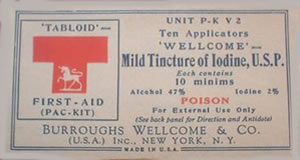 Pac-Kit's story starts in 1872, when John Wyeth & Co, which later became the giant pharmaceutical company Wyeth, developed one of the first rotary compressed tablet machines in the United States. This machine enabled the production of pills in high quantities and with unprecedented precision in times when most medicines were still prepared with pestle and mortar.
Pac-Kit's story starts in 1872, when John Wyeth & Co, which later became the giant pharmaceutical company Wyeth, developed one of the first rotary compressed tablet machines in the United States. This machine enabled the production of pills in high quantities and with unprecedented precision in times when most medicines were still prepared with pestle and mortar.
It was an instant success and Wyeth expanded its distribution network both in the U.S. and abroad. The company sent Silas Burroughs to the United Kingdom in 1878 to import and market its products. Since the less precise pestle and mortar method was still widely used in Britain, Wyeth's compressed drugs soon became popular.
In fact, Burroughs gained so much market share that he received the exclusive right from Wyeth to sell its products in Europe, Asia, Africa, the East Indies and Australia. Burroughs asked Henry Wellcome to help grow the business, and in 1880 Burroughs Wellcome & Company was founded in London.
Because competitors soon followed in their footsteps, Burroughs Wellcome trademarked the word "Tabloid", a blend of the words "tablet" and "alkaloid", to denote the firm's pills. Over the years, the Tabloid brand name was applied on other items such as a Tabloid photographic developer, Tabloid tea and… Tabloid first aid kits and medicine chests.
The Explorers
During the late 19th and early 20th century, news agencies and research institutes funded experienced travelers to explore the last unknown regions in the World, such as the Himalayan mountains, the North and South Poles and the African continent. Burroughs Wellcome jumped the opportunity to equip those explorers with first aid medicine kits.
One of the first to avail himself of the results of Burroughs Wellcome's research was the well-known explorer Sir Henry Morton Stanley, who mapped large parts of the Congo River and Nile and the Lakes Victoria and Tanganyika in central Africa.
The widely publicized adventures of Stanley drew other explorers to Burroughs Wellcome & Co. As such, the company supplied medical equipment and first aid kits to nearly every major expedition. Former U.S. president Theodore Roosevelt, for example, carried Tabloid products with him when he organized an expedition to Brazil to explore the river which was later named after him, the Rio Teodoro. The Tabloid first-aid products also accompanied Admiral Robert E. Peary on his successful 1909 bid for the North Pole and the Norwegian Captain Roald Amundsen when he led the first expedition to reach the geographic South Pole.
Pac-Kit Birth
In 1922, Burroughs Wellcome held a meeting with AT&T's insurance carrier, which was concerned about the number of minor injuries that were becoming infected causing expensive hospital costs. In response, they designed a system that standardized all the antiseptics, medications and dressings into small unit-dose treatment packages sized specifically for first aid kits. This new packaging design was trademarked "Pac-Kit".
After World War II, Burroughs Wellcome divested several divisions, including Pac-Kit, to focus on its core business of manufacturing drugs. The first aid operation was sold to two employees; William Fallon, who was production manager for first aid, and Cecil R. Brown who was sales and product manager and a registered pharmacist.
OSHA and Pac-Kit's further Expansion
The safety equipment industry's market dramatically increased in 1970 with the passage of the Occupational Safety and Health Act (OSHA), which required first-aid kits in every business with employees. In fact, Pac-Kit's growth was so strong that it had to purchase a larger manufacturing facility.
Until 1995, Pac-Kit catered both to the hospital and first aid markets. But because both divisions had totally different operational requirements and management needs, Pac-Kit split into two, The Pac-Kit Safety Equipment Co. and The K.W. Griffen Corporation.
In February 2011, Acme United purchased the accounts receivable, inventory, equipment, brands, historical records and photographs of Pac-Kit Safety Equipment for $3.4 million.
Soon after the acquisition, the number of products available under the Pac-Kit name and its distribution were broadened. As a result, Pac-Kit's revenues rapidly increased.
Today, Pac-kit sells a wide variety of first aid kits, industrial stations and refills, and emergency medical travel and recreational kits for the industrial, safety, transportation and marine markets. It is known for tailoring these items to meet user requirements and for rapid turnaround. - 3. A Visit To Acme's Lean And Well-Organized Asian Operations
A VISIT TO ACME'S LEAN AND WELL-ORGANIZED ASIAN OPERATIONS
A peek at Acme United's latest 10-K reveals the following about its Asian business, "The operations in Asia consist of sourcing, product development, production planning, quality control and sales activities."
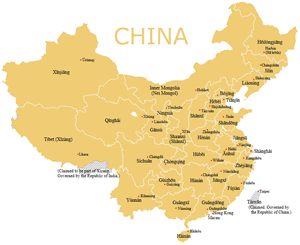 This short sentence, however, reveals a well-oiled 40-person organization that not only takes every Acme product from the drawing board to reality, but also handles direct import sales for major customers in North America and Europe. Moreover, the Asian team takes care of order processing, quality control and makes sure that all suppliers meet social audit requirements.
This short sentence, however, reveals a well-oiled 40-person organization that not only takes every Acme product from the drawing board to reality, but also handles direct import sales for major customers in North America and Europe. Moreover, the Asian team takes care of order processing, quality control and makes sure that all suppliers meet social audit requirements.
The Asian Operations
Acme United Asia is headed by Mr. YB Pek, the Vice President and General Manager. It basically has four offices. One major office in Hong Kong and a second one in Guangzhou, China. In addition, it has two smaller satellite offices (manufacturing hubs) in China. The first one is located in Yangjiang, a city 250 kilometers southwest of Guangzhou and the other one in Ninghai, about 400km south of Shanghai.
The latter two are strategically located near some of Acme's major manufacturers. The close proximity of the satellite offices to the suppliers is very important, because that way the response time, when something has to be discussed or altered to a product, is very short.
The forty employees are divided into several teams that handle the business from A to Z.
1. The Sales/Customer Service team operates out of Hong Kong/Guangzhou and handles direct import sales for major customers in North America and Europe. More recently, the team also started handling sales to Asian customers;
2. The Supply Planning team is spread across the two satellite offices and deals with the physical execution and monitoring of orders;
3. The New Product & Coating Development team advances new product ideas that it receives from Acme's marketing and brand managers. So when a new idea or rendering is received, the New Product Development team immediately starts working on the technical and industrial aspects of the design. It converts the sketches into a physical product, evaluates if the tool will actually function as it's supposed to do and finds a supplier that can manufacture the product with the desired quality and at the required cost. If there are specific requirements for coatings, the Coating Development team defines the specifications and develops the formulation which is proprietary to Acme. Finally, all components of the new product are manufactured in cooperation with the selected supplier;
4. The Compliance team verifies and makes sure that all social audit requirements are met by the company's suppliers. This team even trains the suppliers when there are new social responsibility regulations to make sure they comply; and
5. Four Product teams that each specialize in the sourcing needs of one of Acme's brands. These teams handle all quality control aspects for the products, such as the visual requirements, the performance of the products and also certain packaging information.
Partnership with Suppliers
Acme has about 60 suppliers in China, which produce more than 80 percent of the company's products. These are mostly family owned businesses with between 200 and 500 employees.
Acme United treats them as true partners. They create, grow and make a living together. Acme has a long standing and friendly relationship with most suppliers. As such, it's no surprise that Mr. Johnsen regularly visits suppliers during his trips to China.
We'll find out even more about Acme's Asian operations in our upcoming interview with YB Pek. - 4. Rocky Mount: Providing Room For Growth
ROCKY MOUNT: PROVIDING ROOM FOR GROWTH
 Late August 2013, Acme United purchased a 340,000 square feet manufacturing and distribution center in Rocky Mount, North Carolina. The facility was acquired for $2.8 million from the Chapter 7 bankruptcy liquidation of RoomStore, Inc. The sizeable building, with 40 foot ceilings and 27 bay doors, is located on a 33 acres property and provides easy access to railroad, highways and ports.
Late August 2013, Acme United purchased a 340,000 square feet manufacturing and distribution center in Rocky Mount, North Carolina. The facility was acquired for $2.8 million from the Chapter 7 bankruptcy liquidation of RoomStore, Inc. The sizeable building, with 40 foot ceilings and 27 bay doors, is located on a 33 acres property and provides easy access to railroad, highways and ports.
Acme needed more inventory space because all its brands are growing. The new Clauss/ScottsMiracle-Gro gardening tools, for example, take up a lot of space. And also the many new Camillus knives require extra room.
Because Rocky Mount had been vacant for a year there was no certificate of occupancy. So the air conditioning, water, septic, electrical systems and sprinklers all had to be tested. The offices were refurbished, oil tanks were removed from the property, new floors went in and the loading docks were adjusted so they had the proper height for the trucks. In addition, a new conveyor system was installed, the facility was rewired and equipped with a new phone system. All in all, Acme spent approximately $1.5 million on the refurbishment of the building.
Room For Growth
During the first quarter of 2014, Acme successfully completed the consolidation of its U.S. warehousing operations into the Rocky Mount facility. Before Rocky Mount, the Company had two distribution centers, which, combined, were only half the size of the new one. So basically, there's lots of room for growth at almost zero extra cost.
The first of the former warehouses was a 116,000 square feet facility in Goldsboro, North Carolina. The lease on this building has already been terminated. The second warehouse, was built in the 1960s by Acme Shear, the predecessor of Acme United, in Fremont, North Carolina. It was sold by Acme on April 7, 2014 for $850,000. The Company will record a gain of approximately $200,000 in the second quarter of 2014 related to this sale.
Duplicate operating costs and moving expenses amounted to about $130,000 in the fourth quarter of 2013. In the first quarter of 2014 there was a final cost of about $70,000.
Excellent Purchase
Looking at the entire picture, the move to Rocky Mount generates operating and freight efficiencies, making it an excellent purchase.
In addition, the Company is in negotiations with officials of the State of North Carolina about an incentive package to create jobs in the new facility. - 5. No Efforts Spared To Increase Camillus Distribution In Europe
NO EFFORTS SPARED TO INCREASE CAMILLUS DISTRIBUTION IN EUROPE
For the first time, Acme United Europe's team had a booth at the IWA OutdoorClassics Show in Nuremberg, Germany, one of the most important knife shows in Europe.
 The team showcased the extensive range of Camillus knives and tools to show the professional audience that the brand is back and to attract additional European distributors.
The team showcased the extensive range of Camillus knives and tools to show the professional audience that the brand is back and to attract additional European distributors.
IWA
The international IWA OutdoorClassics show took place in the Exhibition Centre Nuremberg for the 41st time. Each year, the event attracts manufacturers, distributors and buyers from many different sectors.
Besides guns and ammunition, the exhibitors present all products for experiencing nature, especially for hunting and shooting sports, archery, hiking and animal watching. The exhibition also provides information about new kinds of sports, hobbies and the appropriate products. In addition, a full range of service weapons and security accessories - from bulletproof vests, shields, functional clothing and holsters to products for personal and body protection are presented at the show.
This year, IWA attracted a record number of 1,343 exhibitors and over 39,000 trade visitors from all over the world. Exhibitors came from 54 countries, with leading exhibiting countries, after Germany, being the United States, Italy, Turkey and Great Britain.
More specifically to Camillus, more than 50 knife manufacturers attended the show, including several from the U.S. and Asia.
Additional Distributors
The main reason for Camillus to attend the Nuremberg show was to attract new European distributors. Last year, when Camillus was re-launched in Europe, the Company signed distribution deals with Herbertz, one of the leading knife manufacturers and distributors in German speaking countries, and with Fondprodukter AB for Sweden and Norway.
As a result of IWA, and other knife related shows it previously attended, Acme Europe's management is now actively negotiating with distributors from The Netherlands, France, Spain, Portugal, Russia, Czech Republic, Slovakia and many other countries.
A welcome aid in attracting new distributors is the fact that the Camillus brand is still very well-known all over Europe. Remember that Camillus was once one of the largest knife manufacturers in the world.
Of course, having a good reputation isn't sufficient. But coupled with the attractiveness of the Camillus knives and the use of proprietary materials, buyers can be persuaded.
European Taste
Attending the show was also very worthwhile to get an idea of what exactly European buyers are looking for. It's noteworthy that the Les Stroud knives and tools are much appreciated thanks to their design and specifications. In addition, European buyers show a special interest in tactical knives and 'special design' knives such as the Cuda, Dominator and Slydr knives.
Camillus has only been re-launched in Europe for a year now, but already the brand is making waves. Its current distributors are re-ordering and by the end of the year Camillus knives should again be available all over Europe with the help of additional distributors. - 6. Camillus Thrives at Shot Show
CAMILLUS THRIVES AT SHOT SHOW
In January, the 36th SHOT Show was held at the Sands Expo & Convention Center in Las Vegas. Manufacturers of firearms, ammunition, optics, cutlery, apparel, accessories and law enforcement equipment introduced new products and services that retailers will offer consumers during the course of the year.
With over 67,000 visitors, the Shot Show shattered attendance records, giving industry professionals good reason to believe that 2014 will be another strong year for sales of firearms, ammunition, knives and outdoor gear. More than 1,600 exhibiting companies from over 100 countries filled the 635,000 square feet exhibition space.
Also Camillus Knives had a booth at the event. Rick Constantine, the Vice-President of Marketing at Acme was quoted saying: "It was the best show ever in Acme's existence with Camillus". He mentioned that the Company had significant success with buyers from Europe, Asia and Canada. In the latter, Camillus products will soon be introduced at another prominent retailer.
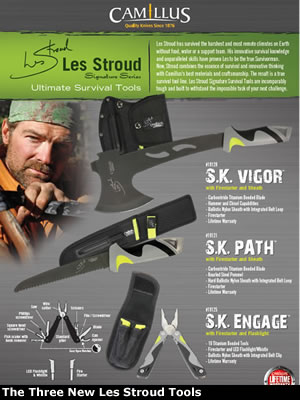 Marketing Event of the Year
Marketing Event of the Year
The Shot Show is Acme's biggest annual marketing event. This year, representatives from the US, Canadian, European and Asian divisions attended the Show.
Over twenty-nine new Camillus products were launched, including new Les Stroud tools (a hatchet, saw and multi-tool) and Les Stroud survival kits. 'Survivorman', who attended the Camillus booth to promote the new tools, continues to be immensely popular. At one point, visitors were in the queue for 2.5 hours to get his autograph.
Late 2011, Acme United signed an agreement to build and sell Camillus survival knives and tools, co-designed and promoted by Les Stroud. The initial four knives under the Les Stroud Signature name were introduced in 2012 and immediately sold well. Last year, five additional Les Stroud knives, called the 'Les Stroud Elite Series', were introduced and had similar success. And now three more tools are added to the family with more to come shortly.
The Les Stroud name, the excellent design of the tools and the use of some of Acme's proprietary materials make Camillus knives stand out.
Camillus also launched the Polaris Sportsman ATV sweepstakes at the Shot Show. Anyone who registers at the CamillusKnives.com/atv website before June 15, 2014 can win a 2014 Polaris Sportsman 850 XP Camouflage Edition All-Terrain Vehicle with Camillus add-ons, having a total average retail value of $13,000. Now that the Shot Show is over, the ATV is showcased at several of Camillus' major customers across the US to promote the sweepstakes.
Additionally, the Company announced that G&G Hawk and WDZ Knives will soon hit retail. Additionally, Camillus launched its new collaborative-designed "Camillus by Tops" knives. These new Camillus knives are manufactured in the USA by Tops knives. Camillus will soon launch more knives from the joint-collaboration. - 7. Workers' Safety a Priority Business for Acme
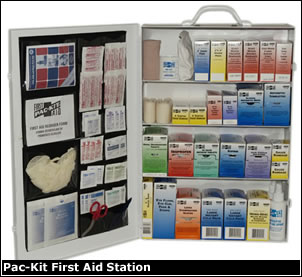 Untitled DocumentWORKERS' SAFETY: A PRIORITY BUSINESS FOR ACME
Untitled DocumentWORKERS' SAFETY: A PRIORITY BUSINESS FOR ACME
Despite the images we sometimes see from harsh working conditions in the third world, workers' safety is taken very seriously in developed countries.
In most cases, laws and regulations require that employees be given a safe and healthy workplace that is reasonably free of occupational hazards. Employers are therefore required to provide medical and first aid supplies matching the hazards of the workplace.
The details of a first aid kit obviously varies with each workplace, but for the most part it contains one-time, short-time treatments that require little technology or training to administer. Kits usually consist of bandages, alcohol wipes, antibiotic creams and products to treat minor cuts and burns.
Pac-Kit Acquisition
Although Acme United has been active in the first aid industry for many years with its PhysiciansCare brand, the company's branch has really taken off since the acquisition of Pac-Kit Safety Equipment Company, a manufacturer of first aid kits for the industrial, safety, transportation and marine markets, in February of 2011.
Acme purchased Pac-Kit's accounts receivable, inventory, equipment, brands and a 40,000 square foot FDA facility in Norwalk, CT, in which it produces its products, for $3.4 million.
Pac-Kit produces first aid kits, industrial stations and refills, emergency medical travel and recreational kits. It's especially known for tailoring its products to meet user requirements and for rapid turnaround.
From early on, Pac-Kit landed one of the largest do-it-yourself chains in North America with a first aid kit, which was soon followed with a hurricane preparedness kit. As a result, in the first ten months after it was acquired by Acme United, Pac-Kit increased its revenues from $4.5 million to $5.2 million, up more than 15%. Additionally, thanks to the combined PhysiciansCare/Pac-Kit buying power, Pac-Kit's margins increased from around 27% to over 30%.
Continued Expansion
Since then, more first aid supplies continue to be shipped. In November 2012, for example, Pac-Kit started selling first aid kits and refills to a large industrial tool distributor. Sales have increased each quarter, which is remarkable as the vendor's annual catalog, which goes out to thousands of customers, still has to shipped.
About twelve different kits are currently offered under this retailer's house brand. They're targeted at different industries such as welding, construction, mining, etc. In general, Acme's first aid business is benefitting from global industrial activity. The Company even added a salesperson very recently in this category.
Also noteworthy is that Acme United's relationship with Les Stroud has expanded beyond Camillus knives, as several new survival kits have been launched under the Les Stroud name. For more information visit http://www.pac-kit.com. - 8. An Interview With Georg Bettin and Willi Engelsberg of Acme Europe
 INTERVIEW GEORG BETTIN AND WILLI ENGELSBERG
INTERVIEW GEORG BETTIN AND WILLI ENGELSBERG
Mr. Bettin, almost a year ago you succeeded Mr. Engelsberg as Managing Director at Acme United Europe. And Mr. Engelsberg, you initially provided transitional support and now assist in marketing and sales functions. Can you give us some more background information on yourselves, how you got started at Acme United Europe and what your current job entails?
Georg Bettin - I've worked in the office supplies industry for over twenty years and I joined Acme United Europe about three years ago. The initial two years I mainly concentrated on expanding the office channel, while I familiarized myself with other channels like Beauty Care and Non Food. Willi intensely supports our Camillus and First Aid business and is my positive sparring partner on daily work.
Willi Engelsberg - The background of my family and myself is the manufacturing of scissors and knives in Solingen, Germany. Up until today, the reputation of Solingen made cutlery is excellent. So when Acme transferred its production to China over 10 years ago, it made a lot of sense to execute this transition with Solingen born personnel who had the necessary knowledge. This is how I came aboard late 2003. It's a pleasure that I can support the Solingen team after my retirement as head of Acme United Europe with some special relevant tasks.
In 2012, Acme United Europe faced a setback when its major customer Schlecker went out of business. How have you adapted to that loss?
The liquidation of such a large entity like Schlecker, with over 7,000 outlets, was a first in German trade. Acme mainly sold manicure items to Schlecker and accounted for a large part of the European division's business. So in retrospective it was a good decision by Acme to have all its receivables insured.
We immediately reacted to the loss by offering our patented and unique manicure items to other chains. This has been successful so far. Additionally, we increased our business with many of Europe's mass market channels.
During the second and third quarter of 2013, sales in Europe were higher compared with the same period last year, mainly thanks to increased business in the mass market channel with chains like Lidl, Aldi, Rewe and Norma. Can you explain the difference between these chains and the popular mass market chains in the US and Canada?
First of all, the European market has to be differentiated as a whole from the US and Canadian markets. Although there is one European Union, there are still many different languages, cultures and sometimes even currencies. Also, a market leader in one particular country isn't necessarily a market leader in the rest of Europe.
Another striking difference is that the core business of European mass market chains like Lidl, Aldi, Rewe and Norma is food. Non-food items, where obviously Acme's assortment belongs to, are mainly offered as one-time promotions. These promotions usually revolve around different themes like kitchen, school, office, but also children clothes, outdoor, garden, etc.
Can you give a few examples of promotions that you've already done this year with these European retailers?
Usually we are successful booking orders from mass market customers when we offer products which are not comparable with our competition and which have unique features. Acme is quite capable of doing so. A perfect example is the patented Titanium-Nitride bonding of our blades. This was the basis for our success in 2012 and 2013. For 2014 we were asked to come up with something new. In consultation with our colleagues in China we are currently working intensively on new ideas both technical and visual. This is again where our Solingen background comes in very handy.
Another area where we can expect growth for Acme United Europe is the office channel. First of all, how does the European office supplies market compare with the US and Canadian markets?
The office channel again differs from country to country. While there are important pan European players like Staples, Office Depot, Lyreco or Adveo, each country also has important local players. That's something we really need to address in order to be the brand of choice for office scissors and related products in the various markets.
What are the major differences in the office channel between Europe and North America?
The major differences aren't the products, but rather the regulations in Europe for materials and product specs. They make it necessary to check our product range from another perspective in addition to the quality controls in the US.
Are there plans to increase Acme's distribution in the office channel?
Absolutely. Initially, we succeeded in getting a broader distribution by increasing the number of active accounts. In 2013 we differentiated the assortment. And 2014 will be the year of new products which we'll introduce soon. The purpose of this initiative is to strengthen our position in the market and to enable our customers to source various products from one reliable supplier instead of talking to three or more partners.
Also, back-to-school (BTS) products are extremely important in the US, while that doesn't seem to the case in Europe. Why is that?
While back-to-school is one of the most important parts of the business for Acme United in the US, it's not the case in Europe. Although we see an increased demand for erasers, children's scissors, etc. in most countries during the summer time, it's basically only the United Kingdom where the quantity and variety of BTS products is similar to the US.
This has to do with the fact that school supplies in the US are provided by the schools, while in Europe that isn't the case. Parents have to buy the supplies themselves.
Now that Camillus is making steady progress in the U.S. and Canada, Europe obviously can't stay behind. Can you explain the re-launch of the brand in Europe and have you already found distributors?
Many people still recognize the name Camillus, which helped us to reintroduce this famous brand in the European market. We first concentrated on the Scandinavian countries, where outdoor is still a part of people's daily live. We found a good partner with Fondprodukter AB from Sweden, who will be the exclusive distributor for the Camillus range in Sweden and Norway. And only a couple of weeks ago we signed a contract with Herbertz, one of the leading knife manufacturers and distributors in German speaking countries. We have already taken initiatives to expand the number of distributors.
Can you give us some background on the European knives market?
The market for professional forged chef's knives, as well as for butcher knives with taper ground blades, is still dominated by German manufacturers. Next to several big players you'll find numerous smaller manufacturers in the area who are often specialized in a limited assortment only.
As for the retail market, there are all kinds of knives, going from inexpensive blades from strip material to chef's knives for more advanced home cooking. The high performance knives are often ten times more expensive than a similar inexpensive household knife.
In order to stimulate the business in a stagnant market we see more and more repetition of older ideas. Knives from Damascene steel, for example, are common. Also, "Never needs sharpening blades" with a serrated edge and knives with color coated non-stick blades and colorful handles are very popular.
Before we launched Camillus, Acme was mostly selling taper ground blades and forged chef's knives under the Clauss brand in Europe.
Where do you expect Camillus to be in Europe twelve months from now?
Camillus will regain part of the market share it had in the past. With the Les Stroud knives and accessories we have a very strong Unique Selling Proposition on hand that many people recognize and like.
And as a final question, you just started expanding into the first aid market. What are your plans here?
First aid already plays an important role in the mass market and retail channels for promotions but also for daily business. In the office supplies industry our customers look for additional turnover and margin opportunities in a generally declining market. We offer our partners the possibility to extend their range of products to new markets and enable them to have one source for various products.
Gentlemen, thank you both for this interview. - 9. 136 Years of Progress and Innovation
 CLAUSS: 136 YEARS OF PROGRESS AND INNOVATION
CLAUSS: 136 YEARS OF PROGRESS AND INNOVATION
The start of the Clauss history takes us back to 1877 when John Clauss, and his younger brother Henrie, established Elyria Shear Works in Elyria, Ohio. Together with five employees, they began manufacturing scissors, shears, straight razors and serrated kitchen knives from a one-room building.
With the shear business prospering, the brothers moved the company to Fremont, Ohio in 1887. In Fremont an accessible, abundant supply of natural gas had recently been discovered, which was ideal to fuel the company's furnaces.
Unfortunately, three years later disaster struck as the plant was completely destroyed by fire, causing 125 employees to lose their jobs. Less than four months later however, Clauss had erected a new four story brick building which was the largest shear works in the world at that moment. Clauss also used this opportunity to change the company's name to Clauss Shear Company.
In 1919, Clauss Shear merged with Henkel Company, which manufactured manicure and pedicure implements, files, knives, shears and razors. The Henkel-Clauss merger created a company with over 1,000 employees and had the largest payroll in the United States at that time. John Clauss didn't live long to enjoy that success as he died later that same year.
Starting in the early 1920s it was difficult for Clauss to compete with inexpensive European imports. First, Germany was permitted to export shears and scissors duty free to the United States to help pay back its World War I debt. And after World War II, wages in Europe were much lower compared with the US, so again European scissors were being sold at half the price of American made scissors.
Despite a shift to industrial scissors and cutting tools in the 1950s, it was impossible for Clauss to survive on its own. In 1967, Clauss was taken over by Alco Standard Corporation, which integrated it into its existing structure to manufacture tools for industrial niche markets such as heavy duty metal cutting shears, poultry shears for gutting chickens and surgical scissors for eye operations. The Clauss devision at Alco had approximately 100 employees and produced about $18 million in annual revenues in the late 1980s, but profits continued to decline.
In May 2004, Acme United Corporation acquired the Clauss inventory, trademarks and brand names for approximately $500,000. Acme United immediately integrated the Clauss business into its existing operations and started to expand its number of products. In 2006 and 2007 sewing shears, utility knives, chef shears, hobby knives and a titanium-bonded spring-assisted pruner were brought to market. In 2008, Clauss introduced the SpeedPak utility knife and its replaceable cartridges with 10 titanium blades.
In 2010, two new lines of gardening tools, the Enviro-Line and AirShoc line were launched, which are currently rebranded in partnership with The ScottsMiracle-Gro Company (NYSE: SMG). And 2013 will be remembered as the year in which the revolutionary titanium non-stick putty knives were introduced.
Today, Clauss offers professional grade tools with extensive offerings in the Hardware & Industrial, Lawn & Garden, Food Processing, Sewing and Housewares channels. For more information visit http://www.claussco.com.
